Let me show you exactly how to grow your blog to the next level.
From content strategies to affiliate marketing, this post has everything you ever need to get massive traffic and income from your site.
Let’s jump in!
1. Content Creation
The most important blog growth strategy is writing blog posts. Nothing else is more important.
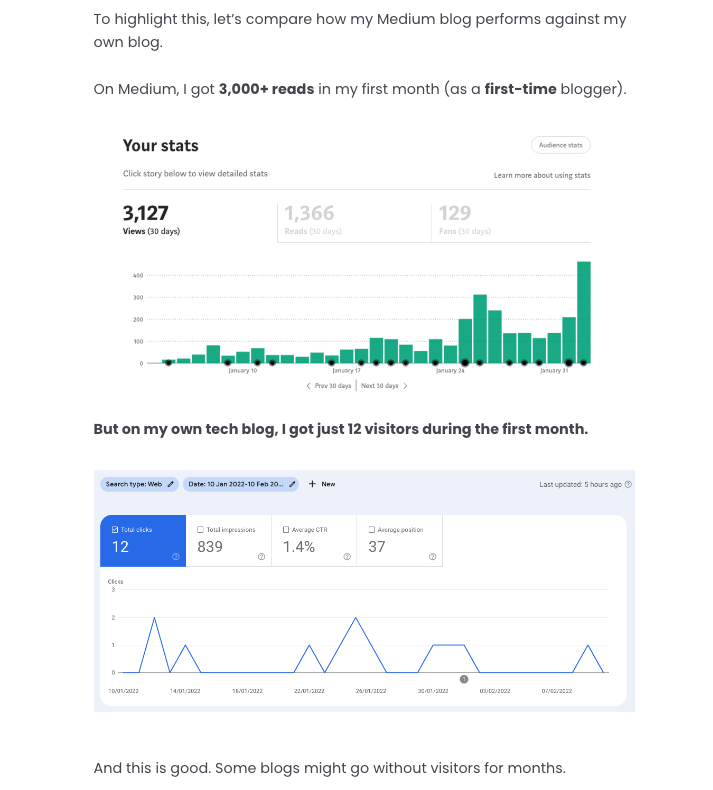
If you’re a brand new blogger, I’d say you should only focus on writing. Nothing else matters before you get a ton of traffic to your site.
But how effective is it to just write?
Here’s what the performance of my newest blog looks like:
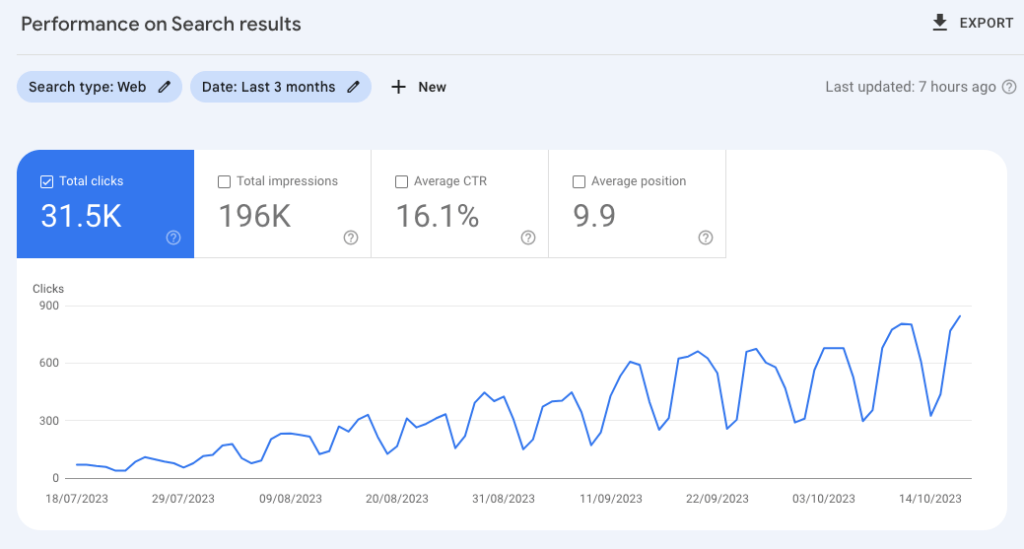
I spent 15 minutes launching the site and then wrote 180 posts to it. This led to massive growth right off the bat.
But “to just write” is not good advice.
Writing posts involves so much more than chaining words together about random topics.
Here’s the complete strategy.
#1 Consistent Posting
Write blog posts every day. This is the number one thing that will grow your blog.
But don’t get me wrong. Google or other search engines don’t care about posting frequency or consistency.
You need to write hundreds of posts before Google trusts your website enough to rank it high on search results.
In my blogs, this easily takes 6-12 months even in a relatively low-competition niche.
For example, here’s a blog that now has ~400 posts.
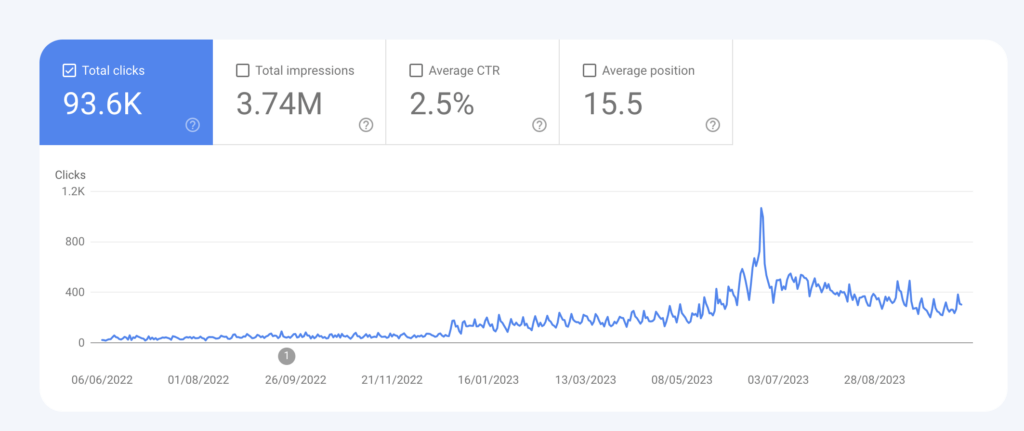
As you can see, with 16 months and almost 400 posts, the site still only gets 10-20k visitors per month.
Of course, this blog is in a competitive niche, but it still goes to show you how slow blogs grow.
#2 Quality and Quantity
Treat every blog post like a micro business.
It needs to solve the problem in a better way than anyone else prior to you.
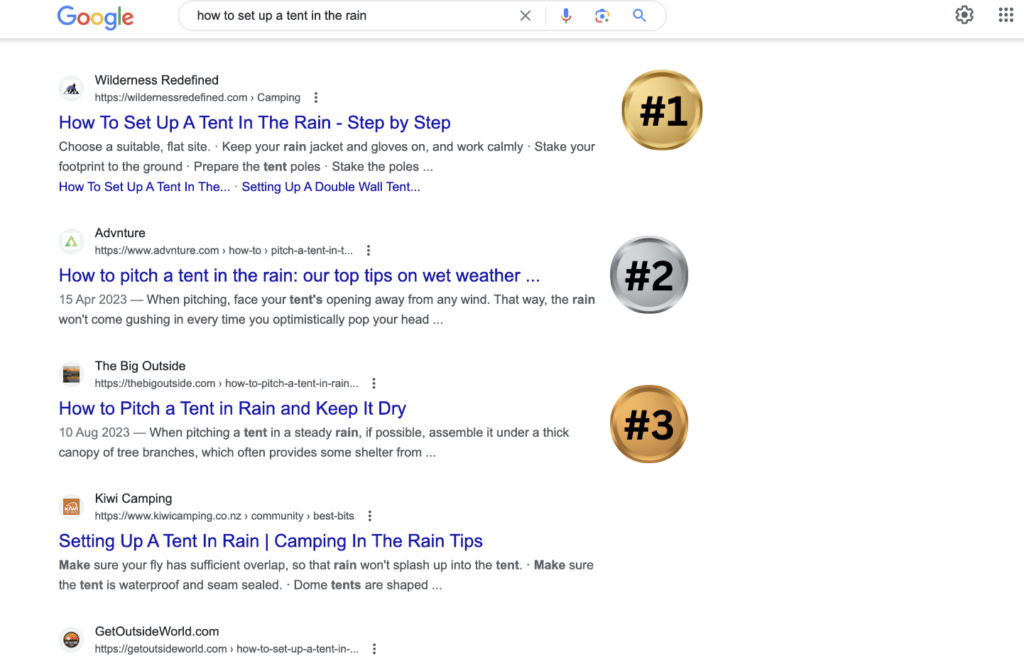
Make sure that you leave Google no option but to rank your posts high. Ensure you leave your visitors no other options but to read your post.
But it’s not just about quality. It’s also about quantity.
If a blog has just one post, it will never rank.
If you have 10 posts that’s still not going to cut it.
Usually, it takes hundreds of posts to find real success.

That’s why you should focus on both quality and quantity.
#3 Evergreen Content
To get more traffic to your blog, write evergreen content.
Think about something like the “Pythagorean theorem”. It’s something that will remain the same forever.
That’s a perfect example of a good blog post topic. As long as you rank, you will get a ton of passive traffic.

On the other hand, those trendy topics can offer quick success.
But those trends will die down.
Something like fidget spinners was a good topic—for a week. Then the trend slowly faded away.
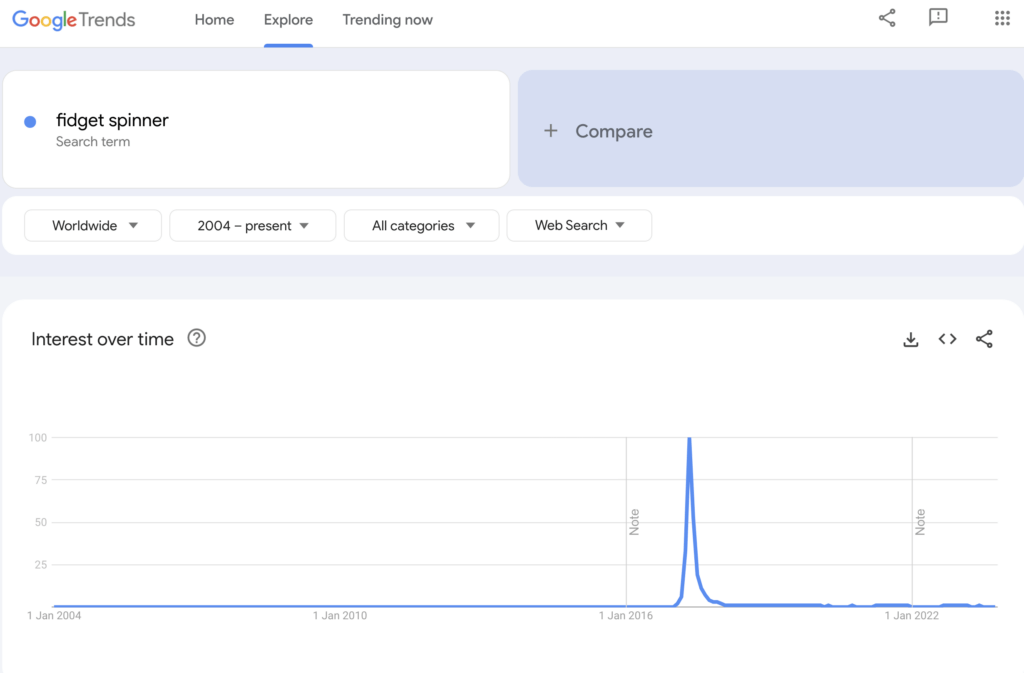
That’s why focusing on content that has been relevant for years is the best bet in the long run.
#4 Trending Topic (Sometimes)
Although I recommend mostly writing evergreen content, I’d still go for trends from time to time.
For example, consider the rise of AI. That’s definitely not just a trend but also something that will continue to boom.
You can use Google Trends to find those rising topics.
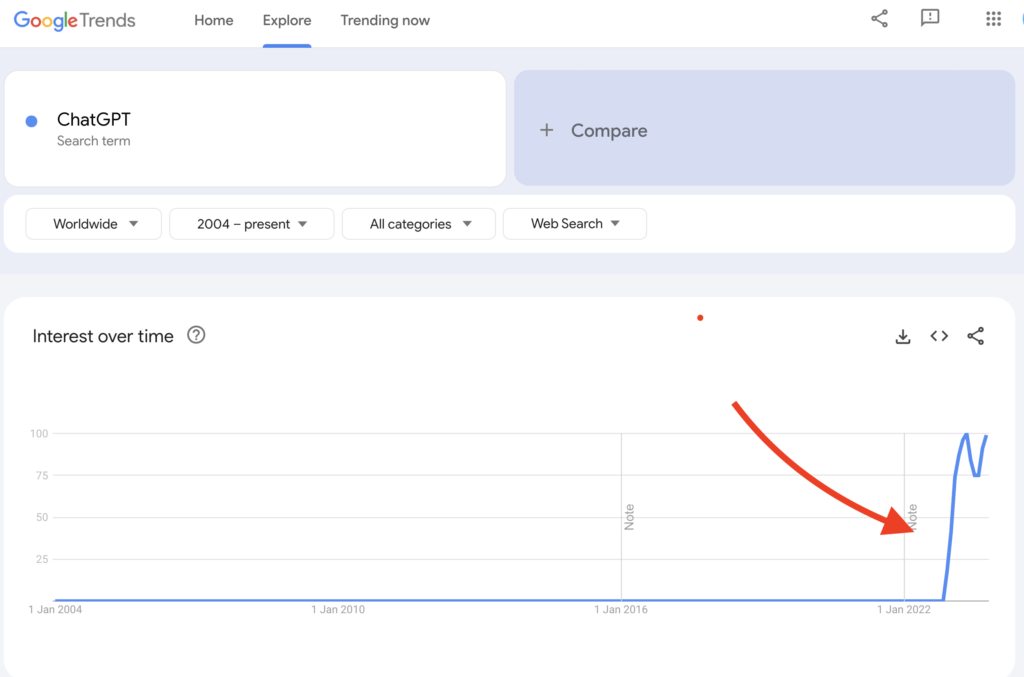
The main benefit is that rising topics can have massive traffic but no competition.
For example, look at this new trendy AI-powered tool called Ideogram AI:
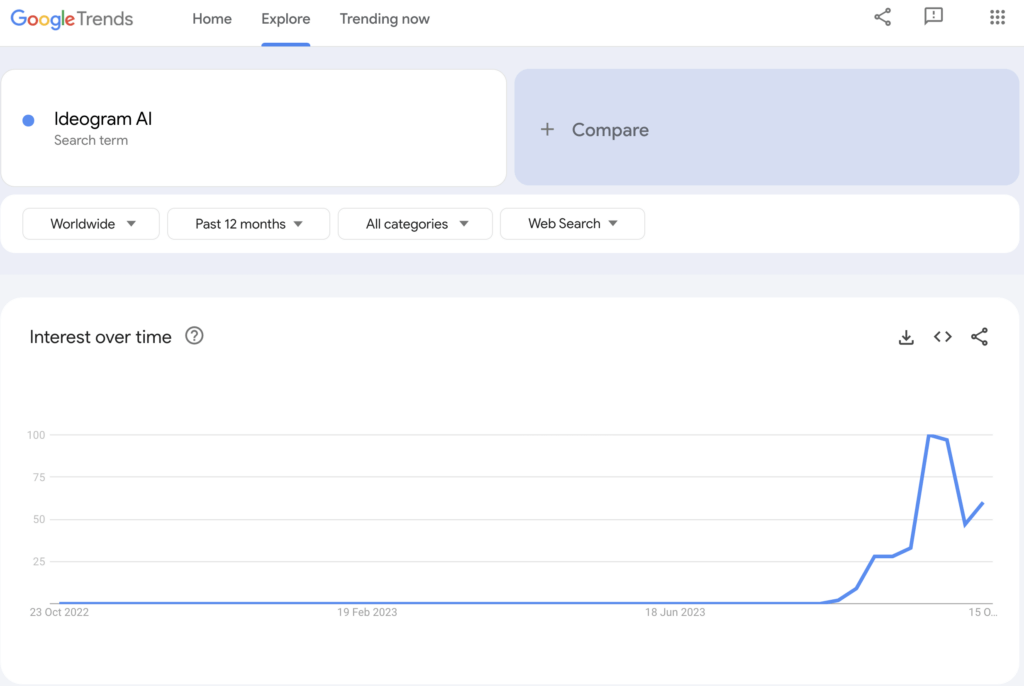
Massive traffic spike on Google. There are millions of people searching for this topic.
But then there are very few reviews for that product:

This is a good blog post topic. Tons of traffic but no competition.
In other words, there’s a big chance to rank high with low effort. At least for a while.
For example, in my tech blog, I wrote a ton of AI-related blog posts in 2022 when ChatGPT and Art Generators popped up into the scene.
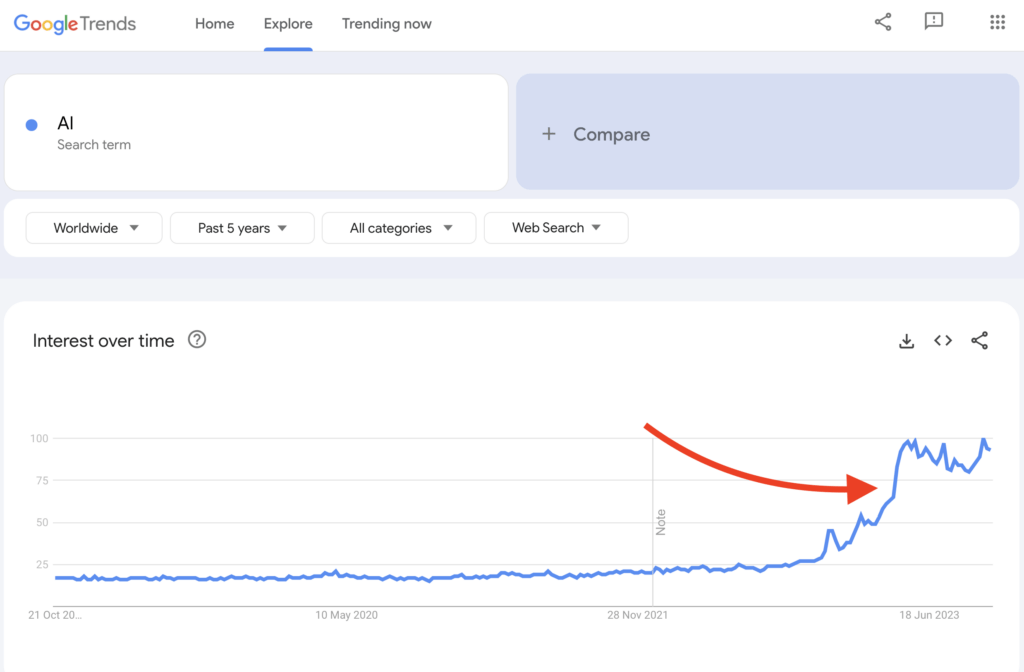
Those were huge successes for just a couple of weeks of work.
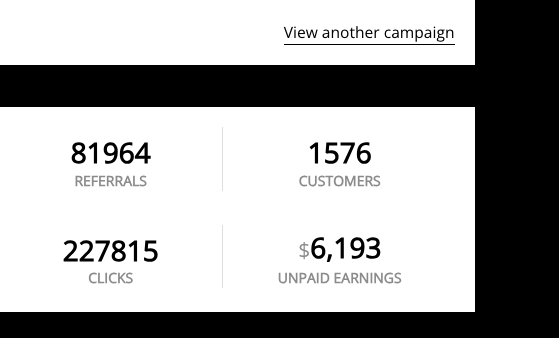
Of course, now the competition has caught up and my AI posts don’t get that many reads anymore.
But this goes to show that those trendy topics can sometimes be worth writing about.
Overall, I’d roughly say that 5% of my blog posts are about trends. Then the rest 95% are about evergreen content.

#5 Guest Posting
Guest posting can be a great way to get some traffic boost to your blog.
If you have a mate or a community of bloggers around you, it might be a good idea to write a handful of guest posts.
But remember that you need to write quality content.
Even if you were to post to an established platform, your post still needs to be the best post and it needs to provide actual value.
#6 Invite Guest Bloggers
Another strategy to grow your blog is to invite guest contributors to your blog.
There are tons of bloggers looking for guest posting opportunities—for free.
That’s a great opportunity for mutual benefits.
With a quality guest post, your blog can start getting visitors.
And with that quality guest post, the guest that wrote the post gets their name out there and might get traffic through links too.
But be careful with guest posters. Make sure every post is the best post on the internet. Poorly written posts are only going to do harm to your site.
#7 Infographics
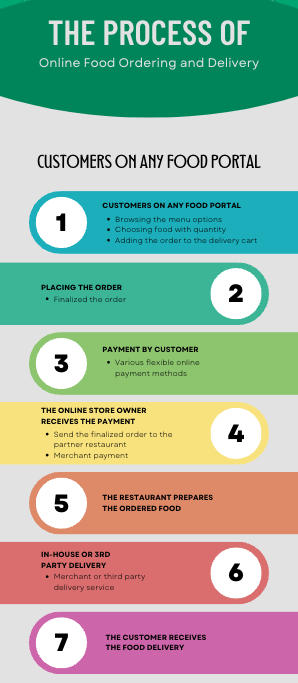
One way to get more traffic to your blog is by creating compelling infographics for your blog posts.
These days, those are super easy to make with tools like Canva.
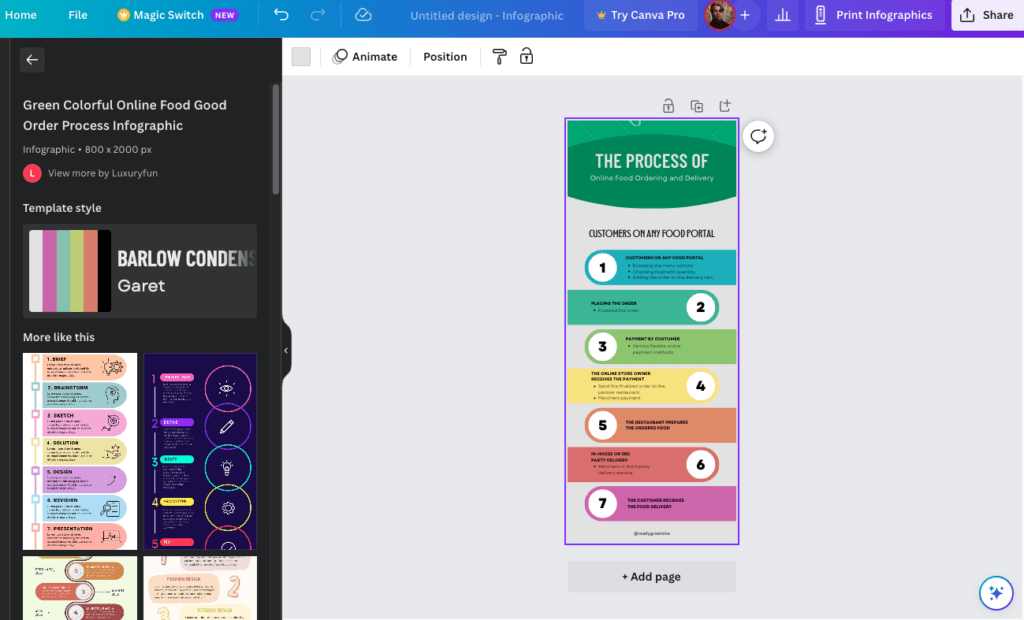
If you’re new to the term, infographics are those tall images combined with text.
Those are used to wrap the content of a long blog post into a couple of action points accompanied by images.
For example, an infographic could be something like how to start a blog in 10 steps. The reason why infographics are good is that they are very “shareable”.
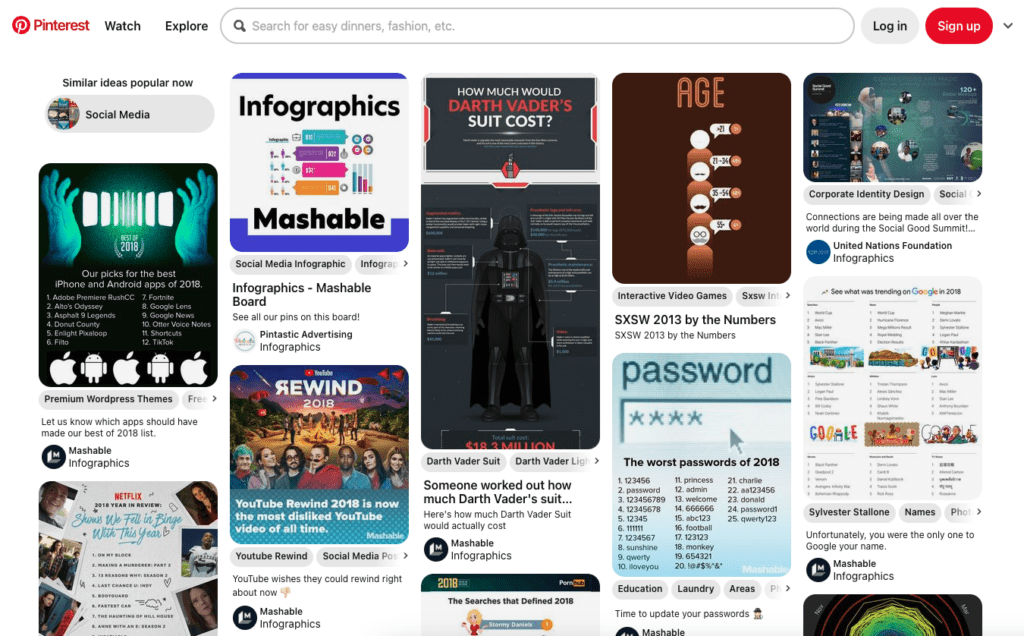
People might share those on social media or chats or even ask you for permission to use those in their own blog posts.
This can naturally lead to a growth in traffic to your blog. At least for a while as people open up your posts from those social shares.
#8 Interviews

A good blog post always adds something to the web.
One way to do this is by interviewing experts in your niche.
This way you get to post about something no one else has ever shared before.
For example, if you have a blog about tennis, how insightful would it be to have a real tennis player featured in one of your blog posts.
Also, you can record that interview and post it as a podcast episode or a YouTube video as well if you like.
But don’t spend too much time on this—especially if you’re just starting out. The main thing is to write blog posts first.
When you have a big audience, mailing list, and avid readers, then those interviews can increase your page views, for sure.
#9 Tutorials
The best types of blog posts to write are those how-to guides or listicles.
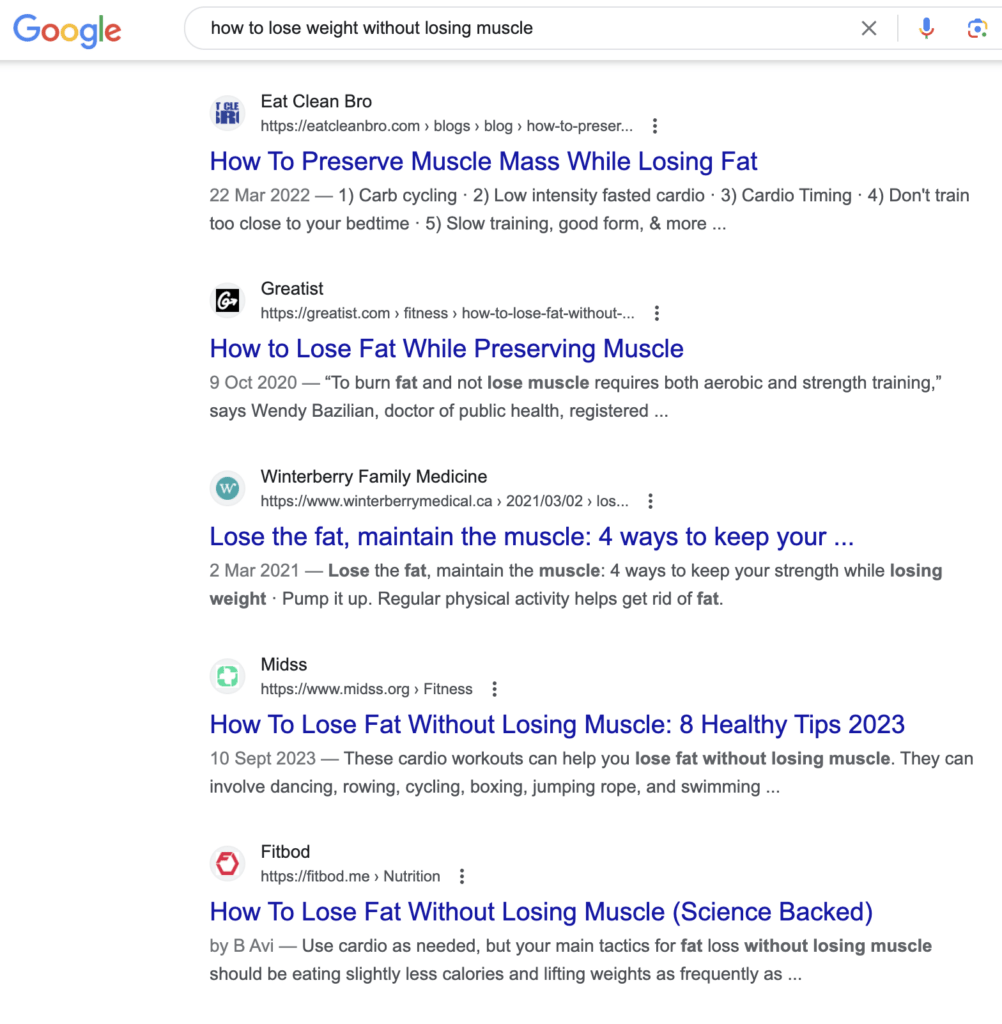
There are tons of people looking for guides and tutorials to find solutions to their problems.
This pretty much applies to every niche you can imagine.
The best part is that most of those how-to guides are timeless.
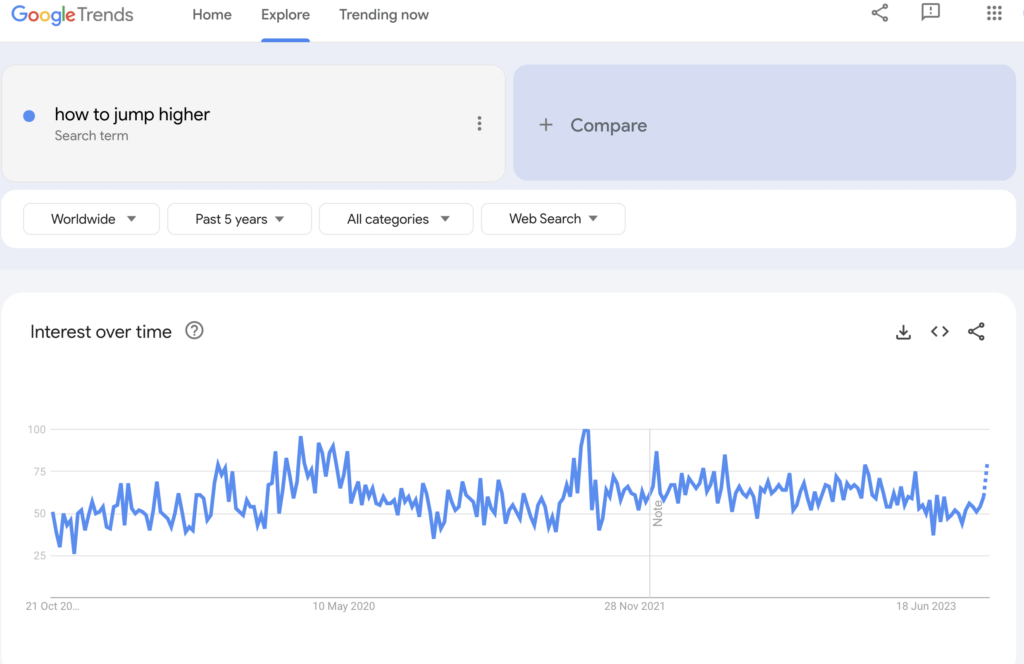
Think about something like how to calculate the Pythagorean theorem. That’s always going to be how it is right now.
You might get a ton of traffic to your blog by writing ultimate how-to guides about topics.
Of course, there are other types of blog posts to write and I’ve made a separate tutorial on how to write those.
#10 Use AI
Don’t forget to use AI tools like Grammarly or ChatGPT to streamline some writing processes.

But don’t even try to use it to automate writing.
In many niches, it just needs a human to write content.
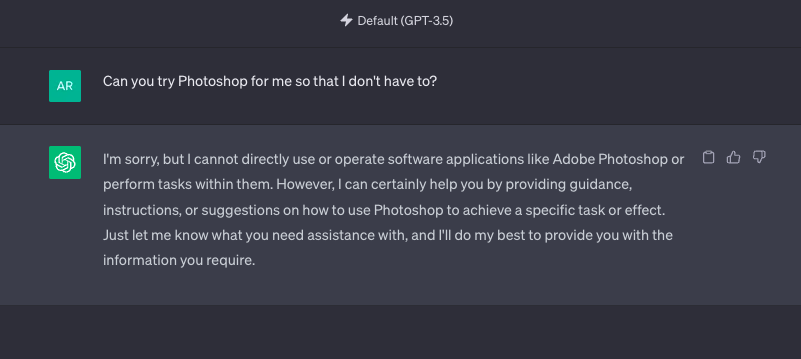
And even if it doesn’t, the content is just repeating what’s already there—which is not going to work.
AI can write content that’s mostly not good enough to rank. But AI can help in some parts of the process.
For example, I use Grammarly AI to fix my typos and spelling errors.
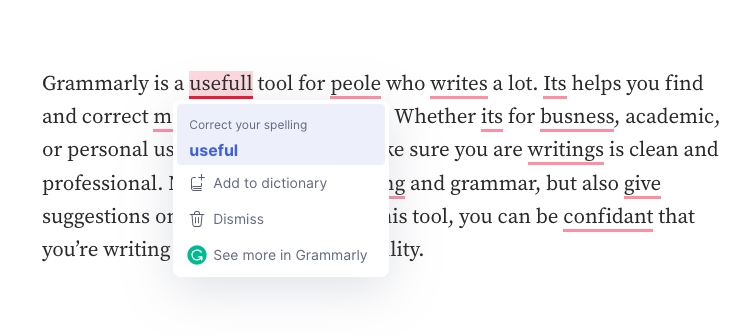
I also use ChatGPT to generate outlines and ask questions about topics that I’m familiar with.
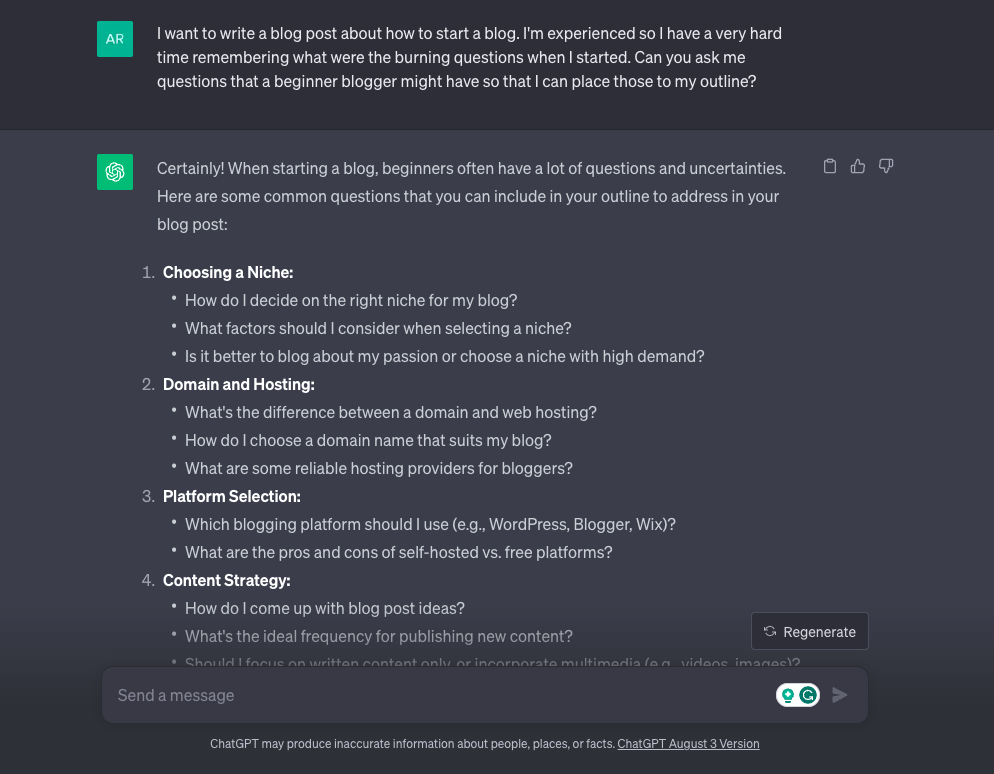
For instance, I wrote a post on keyword research the other day.
In this post, I found ChatGPT super useful.
But not for writing the post.
Instead, it helped me find the right types of questions I’d need to answer in my post.
I told ChatGPT to ask everything a beginner might want to know about the topic.
Then I looked through the questions and answered them to write the post. Without GPT, there would’ve been a lot of things I simply would’ve forgotten.

But make sure to experiment with AI!
It’s slowly changing blogging and there are lots of use cases that might save you tens of minutes or even some hours every week.
#11 Don’t Chase the Algorithms
These days, SEO is no longer about search engine optimization, funnily enough.
This is because Google and other search engines want to see value—content written by people for people.
You don’t need to understand how Google algorithms work.
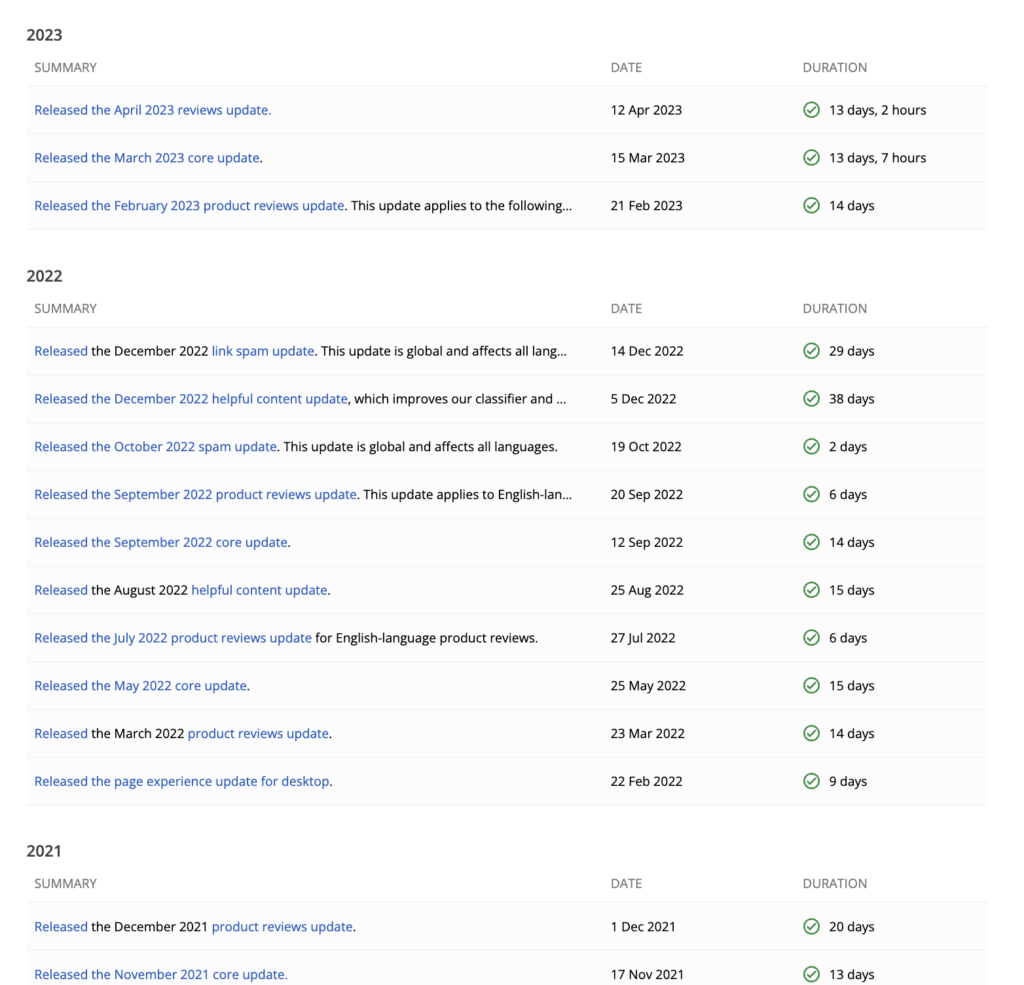
Instead, it’s all about writing content that provides actual value.
Don’t waste your time chasing the algorithms.
Instead, write truly unique and useful blog posts that always add something new to the internet.
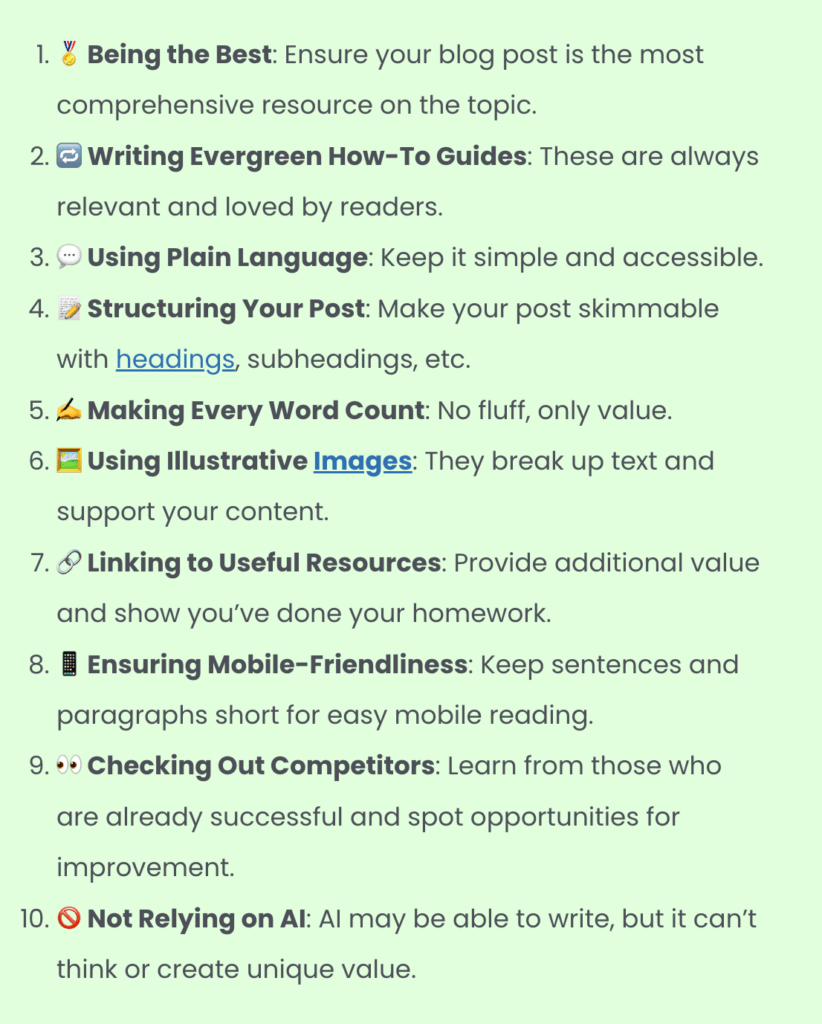
If the post just rephrases the top 5 search results, it’s not going to rank.

Instead, Google wants to see expertise and first-hand experience in topics.
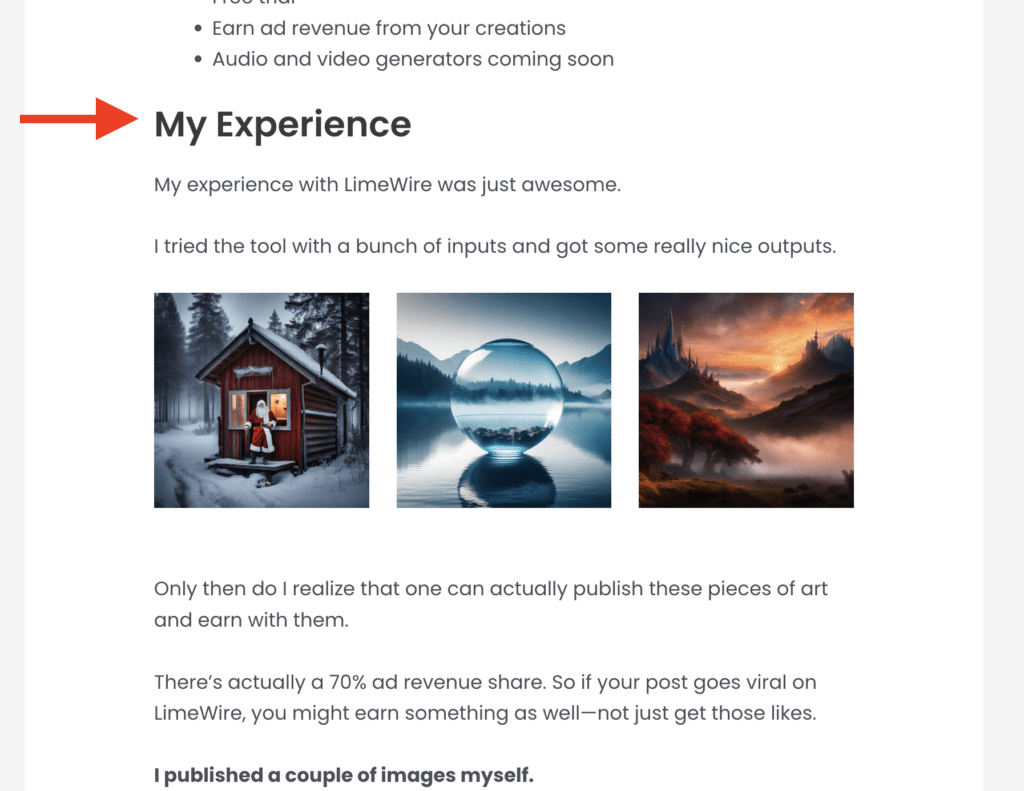
#12 Search Analysis
Remember to write blog posts about topics that people actually care about.
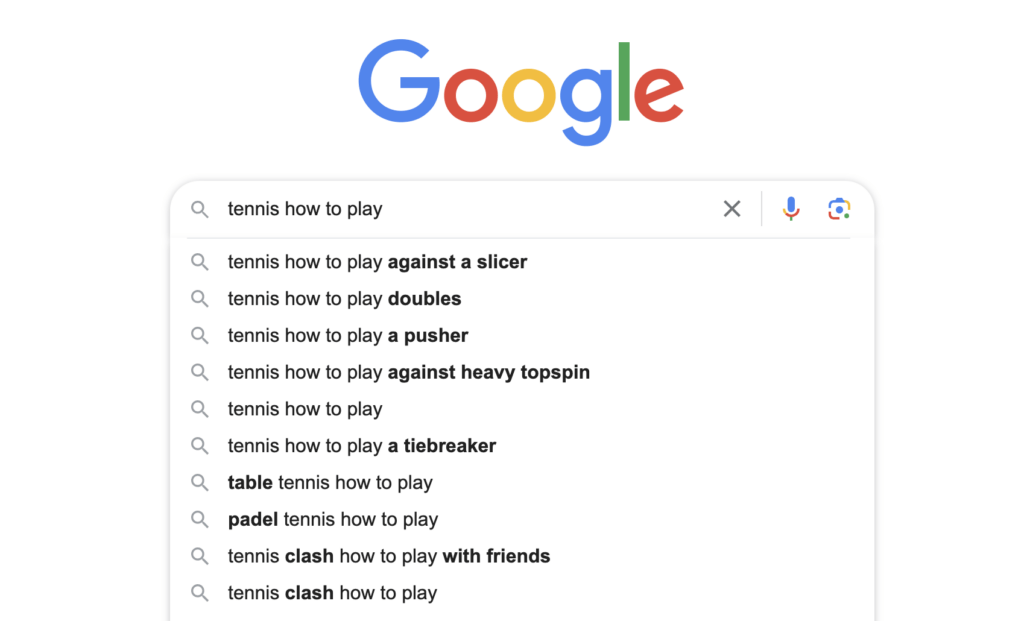
Your blog should become the number-one resource for people in your niche.
Focus on your niche and write topics that cater to it.
Remember to cover your niche from A to Z. Write every post possible.
For example, a good tennis blog covers topics like “How to play tennis” and something specific like “How to measure the string tension of a tennis racket”.
The idea is to build trust in both the eyes of your audience as well as Google.
With a ton of coverage, Google trusts your individual posts and starts ranking them high.
#13 Internal Linking
To get more views and to keep your visitors longer, remember to link to useful resources on your blog.
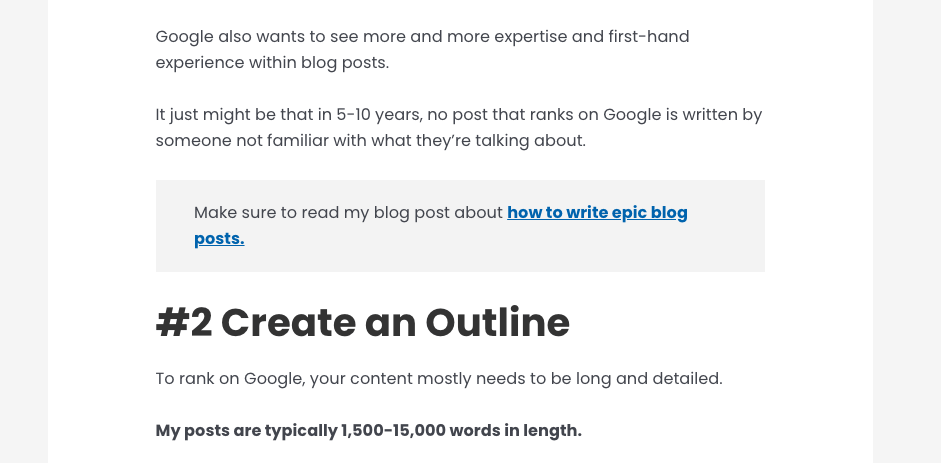
This way you will provide more value to your readers while keeping them longer.
If you think about a traditional blog visit, it goes something like this:
- Search Google.
- Open a blog post.
- Find an answer.
- Leave the site.
This is good. But you can do one better.
Instead of just having your visitor read one post, you can ask them to read more related content.
This way you might multiply your page views without even increasing traffic.
That’s why having links to other posts as well as having some sidebar posts or footer posts can be a good idea.
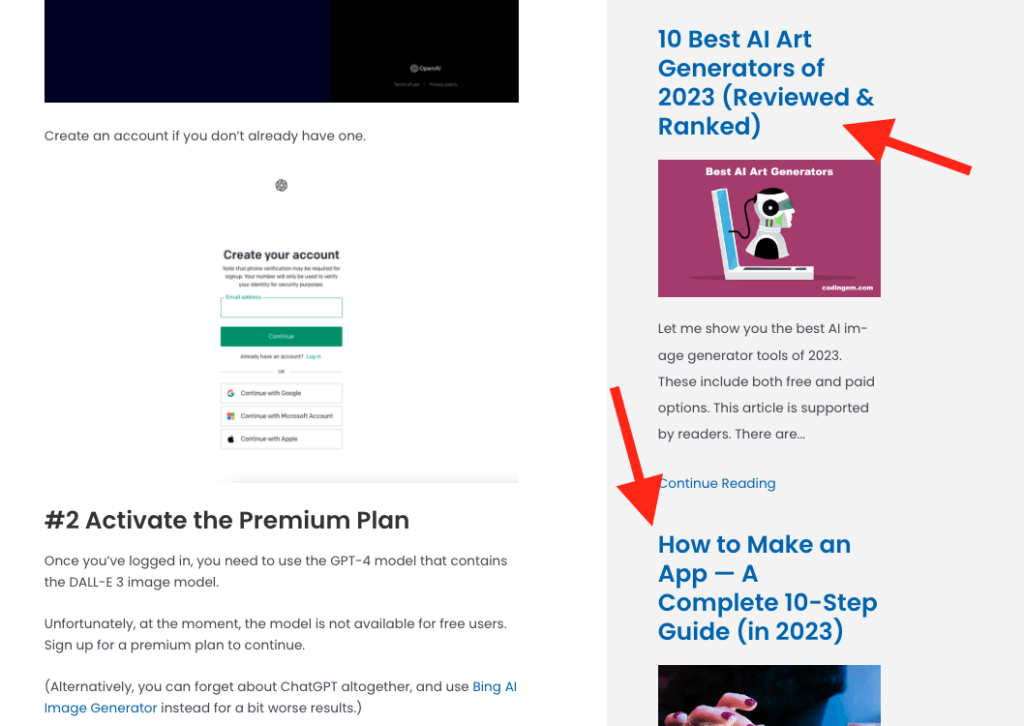
#14 Mobile Optimization
Google is indexing blog posts mobile-first.
If a blog post doesn’t properly load on a mobile device, there’s a chance it’ll be left out of the rankings.
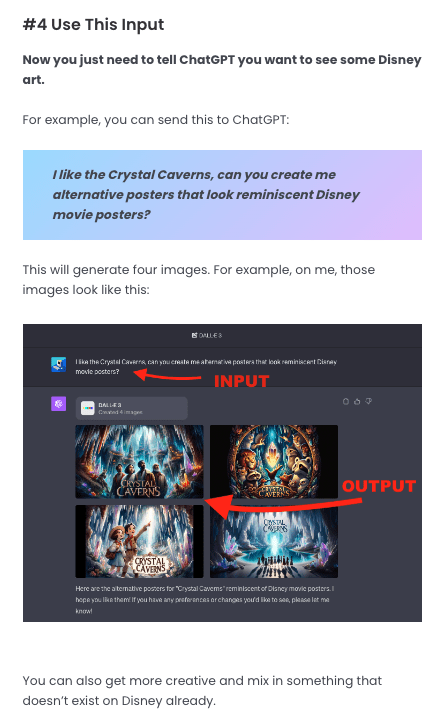
However, these days most web builder solutions offer automatic mobile optimization. But it’s still worthwhile checking that your blog looks nice on a mobile device.
Make sure the text is big enough and that the images don’t overshoot the viewpoint.
If there are issues, those can prevent your blogging website from ranking. Make sure to fix them!
When I launch a new blog, though, I just use some basic free theme that looks good on both mobile and desktop (most of them do).
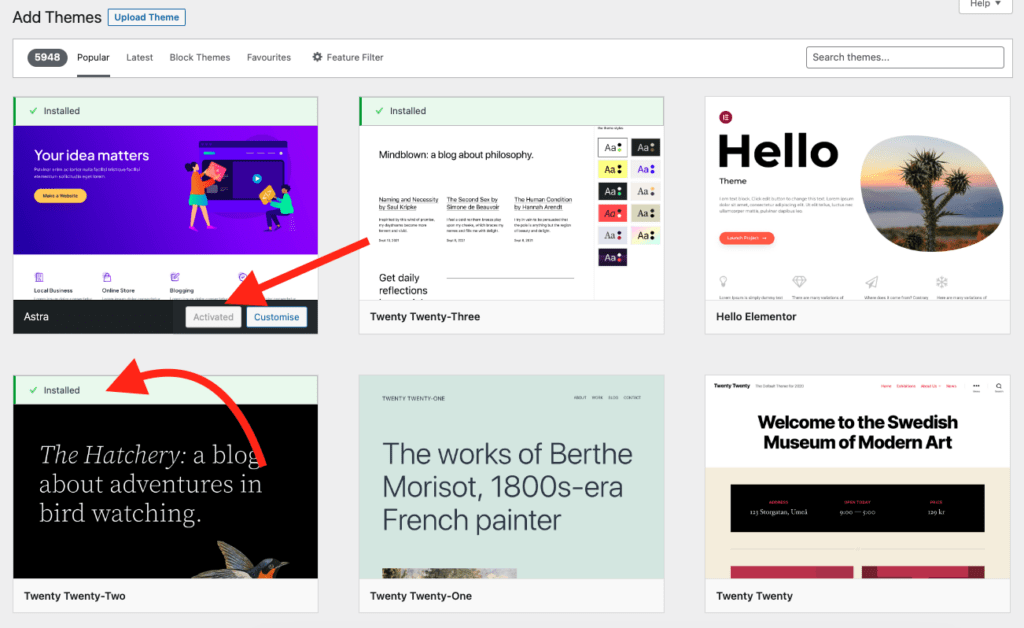
In case you’re interested, I usually use the free Astra theme in my WordPress blogs.
#15 Fast Loading Speed
Speaking of user experience, make sure your website is up to par with your competitor’s pages.
This is not an exact science but more of a common sense thing.
Just open up your page and see if it loads. Then look at your competitor’s pages and see whether they work roughly as fast.
If your page takes 30 seconds to load while your competitor’s blogs take only 1-2 seconds, there is a problem.
Of course, you could always run your blog through the Google Page Speed tool, but that’s usually not the best reference point.
I happen to get a good score. But there’s absolutely nothing I’ve done to accomplish this. It’s just out of the box when using WP with a good theme.
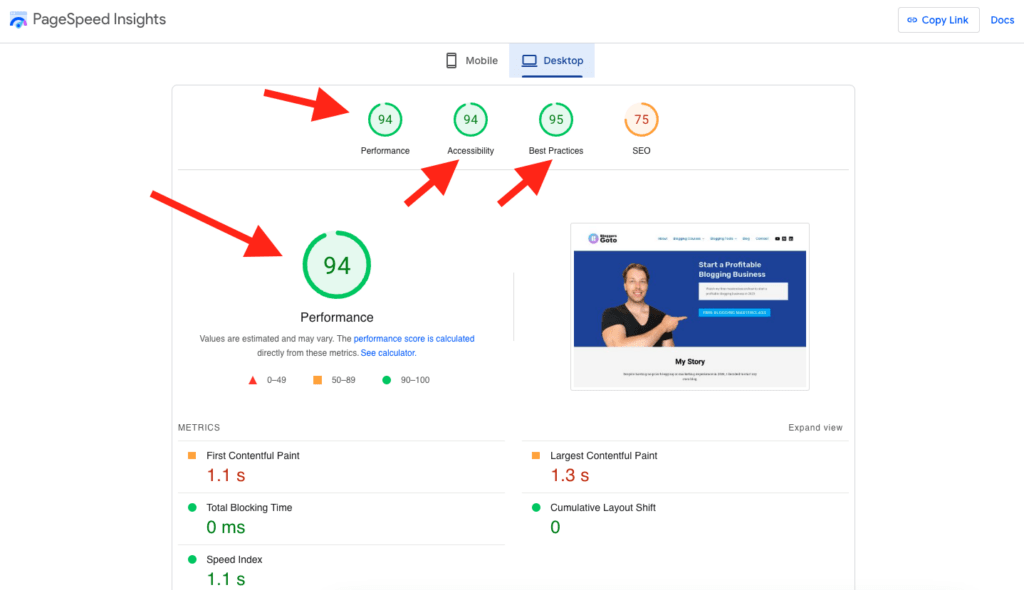
In many niches, it’s not an issue to score low, though.
For example, our cottage rental blog gets very poor mobile speed scores.
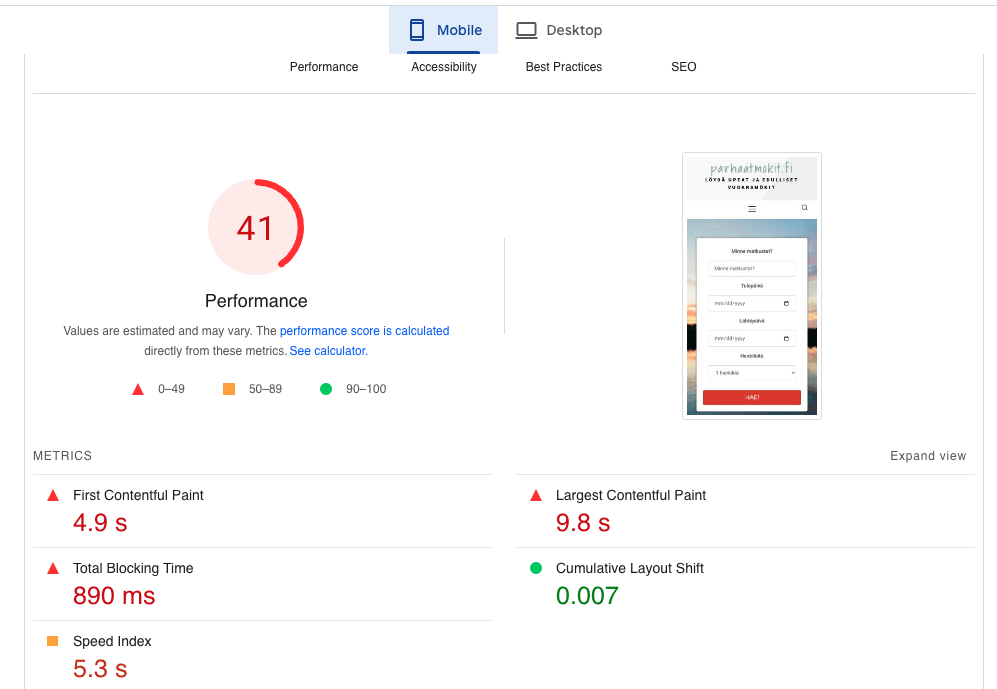
This is because of our heavy theme, customization, and unoptimized image strategy.
But then, if we compare these scores to our competitor’s website, they have the exact same issues.
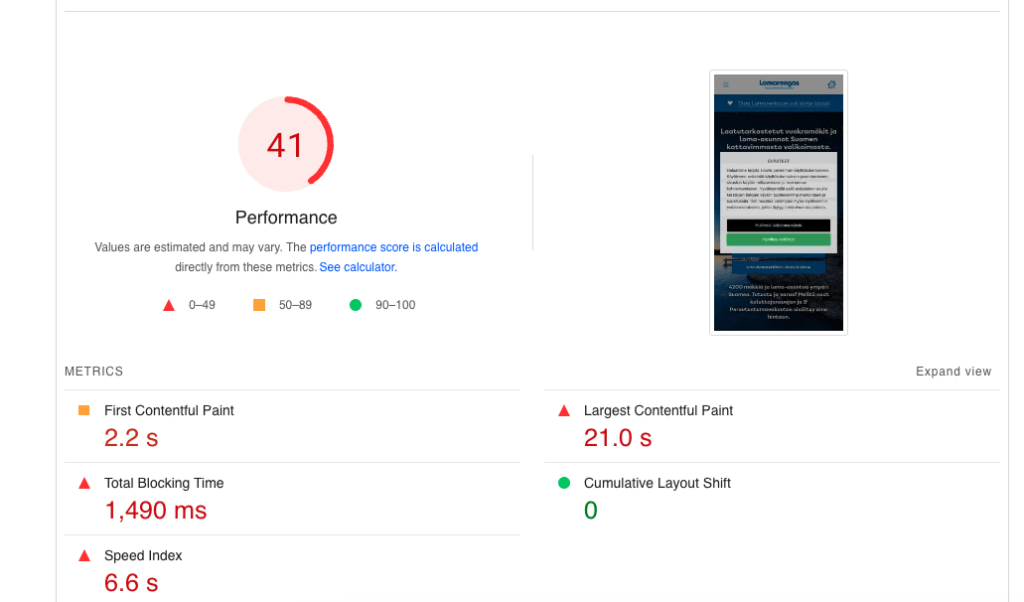
So while it’s not optimal to have slow websites, if it’s typical in your niche, then it’s probably not going to have any impact.
All in all, if you’re running a traditional WordPress blog, most of the optimization is already taken care of on your behalf.
But it’s still worthwhile checking, though.
#16 Schema Markup
Schema Markup can help Google understand your blog posts better.
This is just some structured data about your post.
Don’t worry, if this sounds technical, most of the time, you don’t need to touch Schema Markup if you don’t want.
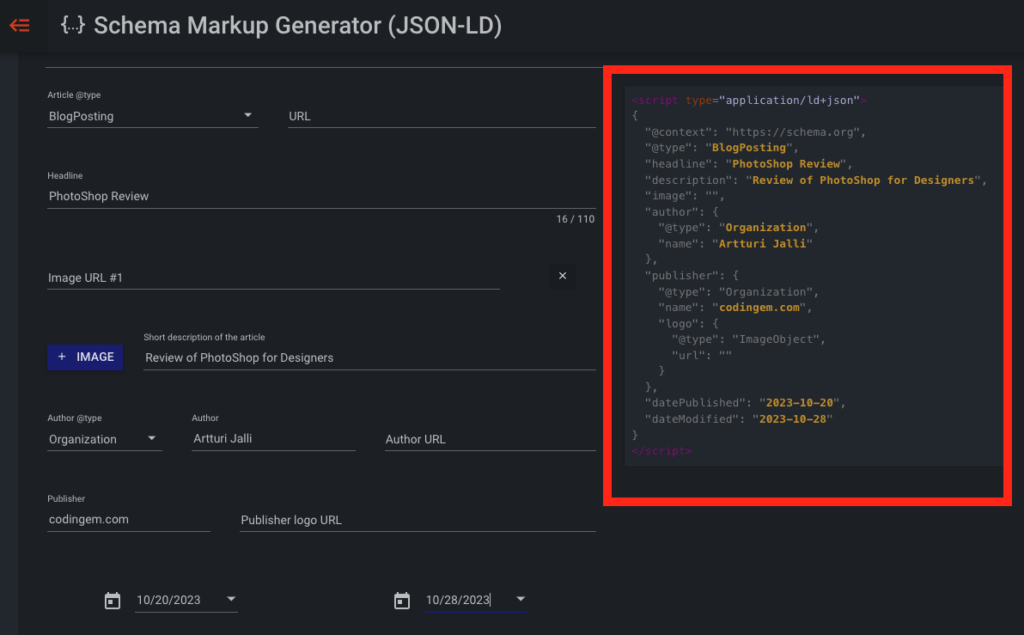
But when is it useful then?
Have you seen those review posts on Google where the star rating is rendered in the search result already?
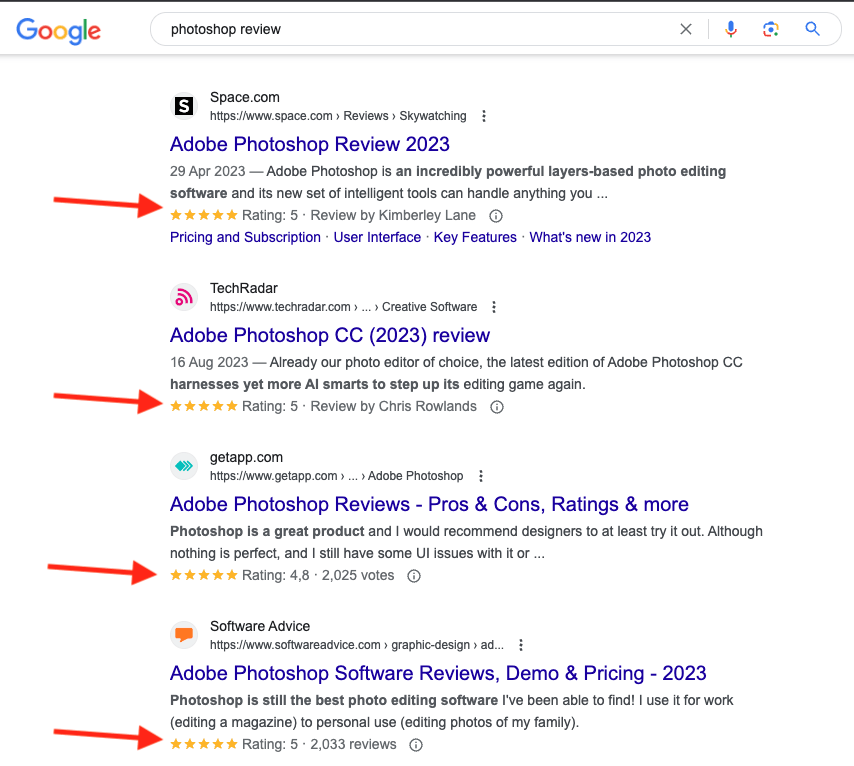
This is one example of what one can accomplish with Schema Markup.
The idea is to leave that Schema language code to your blog post to signal Google additional information about your content.
For example, in WordPress, you can create a custom HTML element and place schema there.

Schema markup is not a make-or-break thing. It’s more of an icing on the cake.
For example, if your review post ranks high in the top 10 search results, it looks more professional if it also features that star rating in the mix.
Of course, you can use Schema markup for other things than just reviews. But all in all, it’s just to provide Google with extra context.
To be brutally honest, Google is good at reading your posts and picking up details without your help. 🙂
#17 Update Old Content
In most topics, blog post content needs some refinement.
In product reviews, the prices and sales might change.
In roundup posts, new products might deserve a spot on the list.
In informational content, there might be new approaches to solving problems.
In other words, it makes sense to update older posts.

This makes them relevant again and Google might start pushing those again.
But it’s not just that.
If there’s a blog post that has failed, it might have to do with poor-quality content. To bring life to your posts, making changes can move the needle.
2. Social Media
#1 Share on Relevant Platforms
One good strategy to get more visitors to a blog is by sharing content on social platforms like X, LinkedIn, or Pinterest, just to name a few.
Also, forums like Quora and Reddit can be great places to share stories.
But here’s the thing.
The blog posts that you share should not read promotion all over the place.
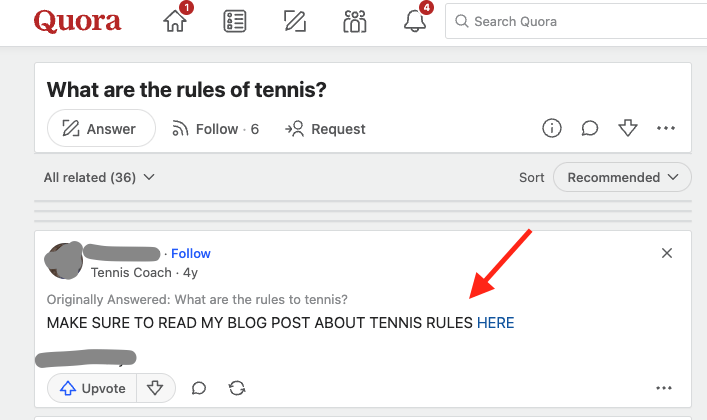
Instead, it should be subtle and helpful.
If you promote on forums, you should answer a question in detail and then in the end refer to a post you’ve written.
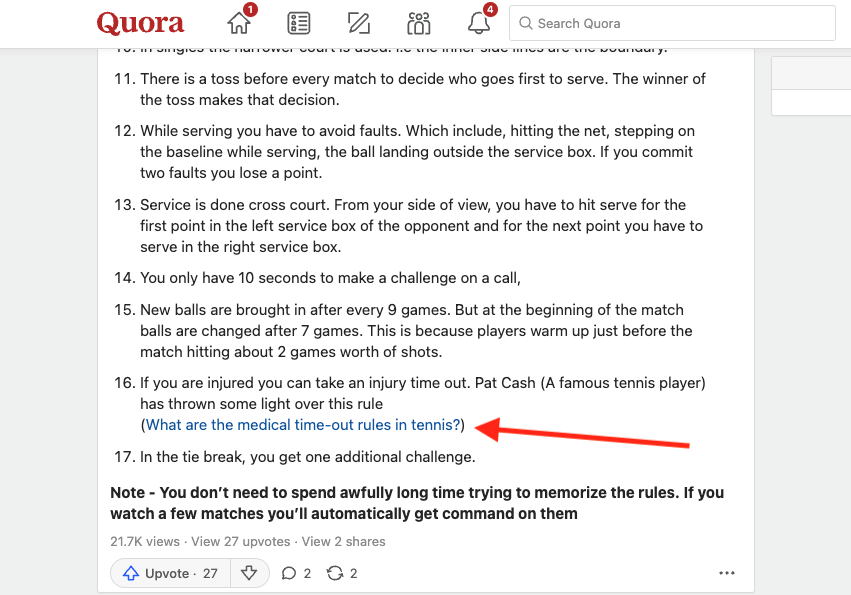
Or if you want something to go viral on a social platform, you should write a compelling teaser for the post.
Essentially, you should make a short and concise post and then refer to a blog post at the end of it.
It all should provide value.
But remember that this is simply not going to work in every niche.
Imagine writing a blog post about “how to filter an array in Python”. That’s a topic that won’t go viral on any social platform no matter what.

But on the other hand, something technical like that might have a place on forums like Quora, Reddit, or StackOverflow.
#2 Engage with Followers
If you choose to use social platforms as a vehicle for getting more traffic to your blog, make sure to engage.
Interact with people.
Answer every single comment or message you get.
People follow people who they can relate to. If you always post but never respond, there’s no relatability—no matter how good posts you write.
#3 Join Communities
On platforms like LinkedIn or Medium, there are groups of people with a common interest.

If you find a relevant group to your blog’s niche, that’s a great place to get more visitors to your blog.
But very similar to social promotion in general, forget about the word promotion. Instead, try to always provide value.
Don’t rush in to share every single blog post.
Instead, write a teaser, answer a question, share an insight, or do whatever is enjoyable and entertaining in and of itself.
Then, reading your other posts becomes a no-brainer for the people.
#4 Use Tags
Maximize your reach with tags.
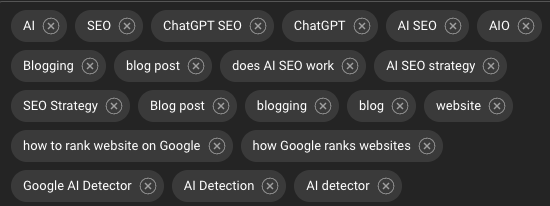
Even though social platforms are getting better at recommending your posts without tags, those can still give you a boost.
But if you use tags, do it with care. Don’t make this look like a promotion either.
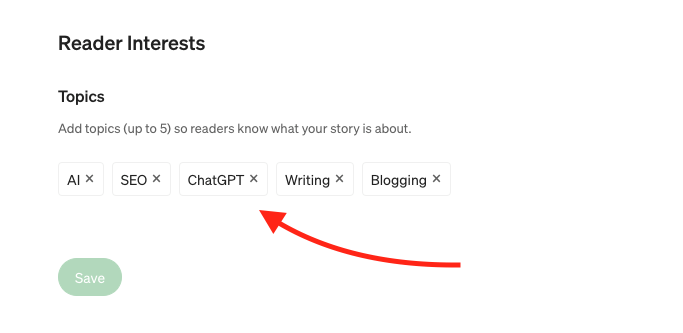
Just use a couple of distinguishable keywords that describe your content the best.
#5 Collaborate
Collaborate with influencers on social platforms to get your name out there.
If you want to spend some money, you can buy shoutouts.
But those should only come from channels that are in your niche.
If an account about pets shouts out a crypto blog, that makes no sense.
But if a pet account shouts out a cat account, that makes total sense and can bring in truly useful followers.
#6 Instagram/Facebook Stories
Instagram and Facebook stories are great places for showcasing your channel.
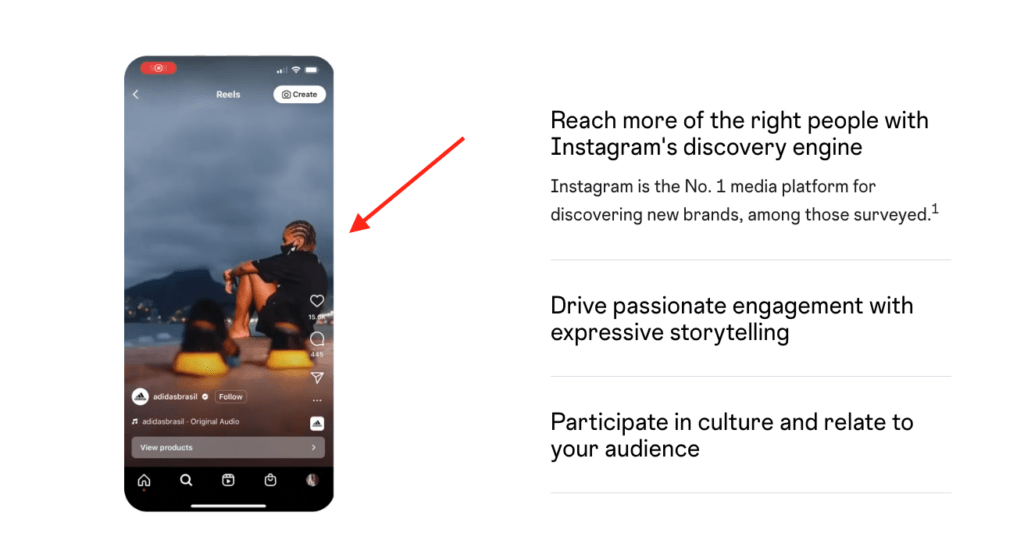
Although I personally don’t post there, how I would generally do it is as follows:
- Create compelling stories to attract people to follow you
- Publish content to followers to promote blog posts
This way, when people visit your blog, they’re already highly engaged. They’ve already seen at least one of your stories and social posts before. 🙂
But remember, you need a ton of views before you see people coming to your blog.
#7 Pin Posts
On many social sites, you can pin your most relevant content on the top of your profile page.
Also, don’t forget to use your Bio to get traffic to your blog.
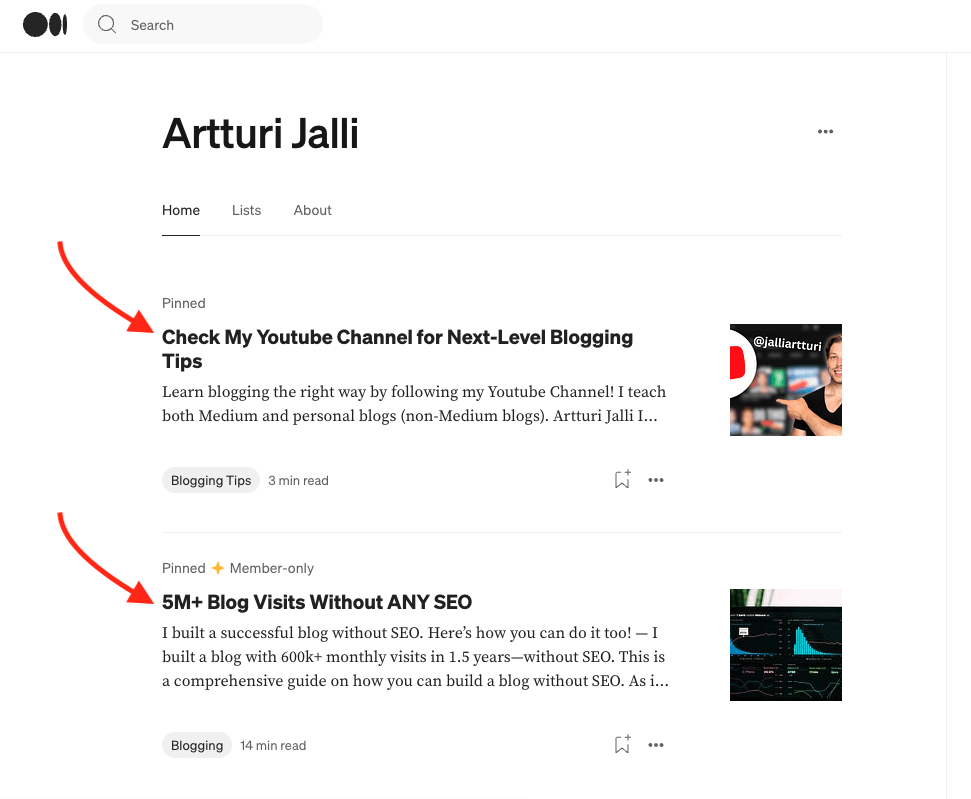
If you’re a blogger, mention it in the bio.
And if the platform allows, place a link to your blog so that it’s clickable without expanding the bio.
3. Build a Community
#1 Comments
Blog comments are good for engagement.
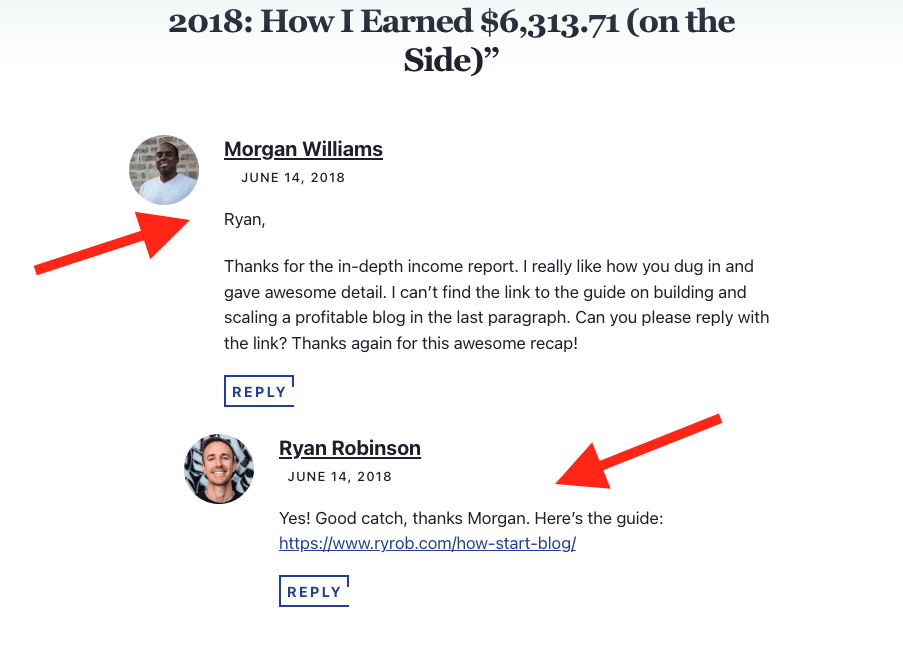
If you allow people to comment on your blog posts, they can feel immersed as they’re able to communicate with the author.
If you have comments enabled, answer every one of those! This engages the audience and they might come back for more.
But one sad thing I’ve realized is that there’s no way to filter out spam comments.
Unfortunately, even those legitimate-looking comments are usually spam comments.
For example, these comments look harmless, but these are all bots, not actual readers:
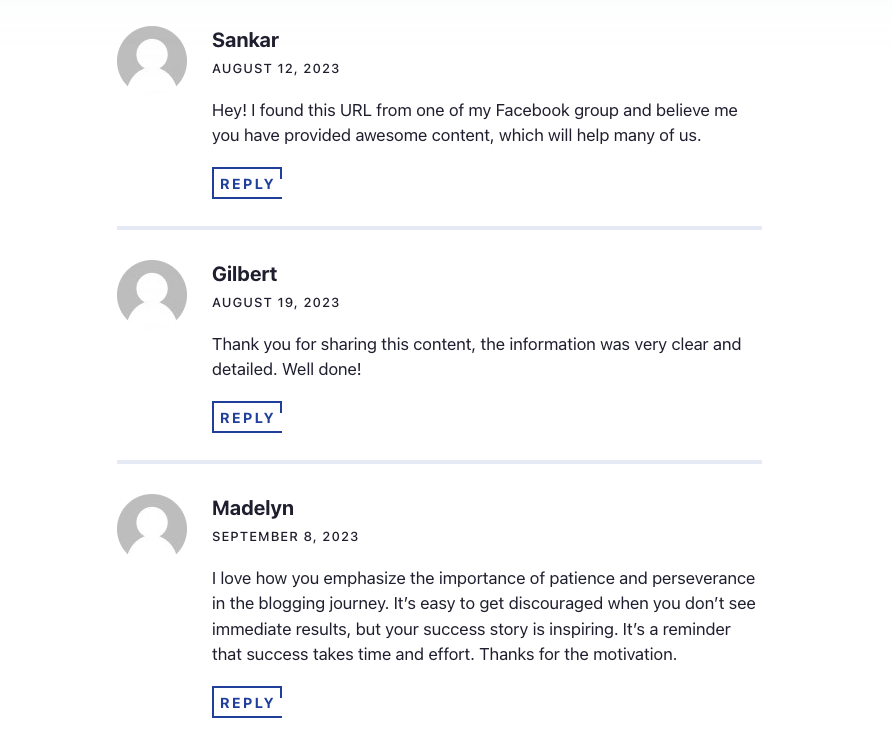
#2 Email Newsletter
One of the best ways to get more views on your blog posts is by having a newsletter.
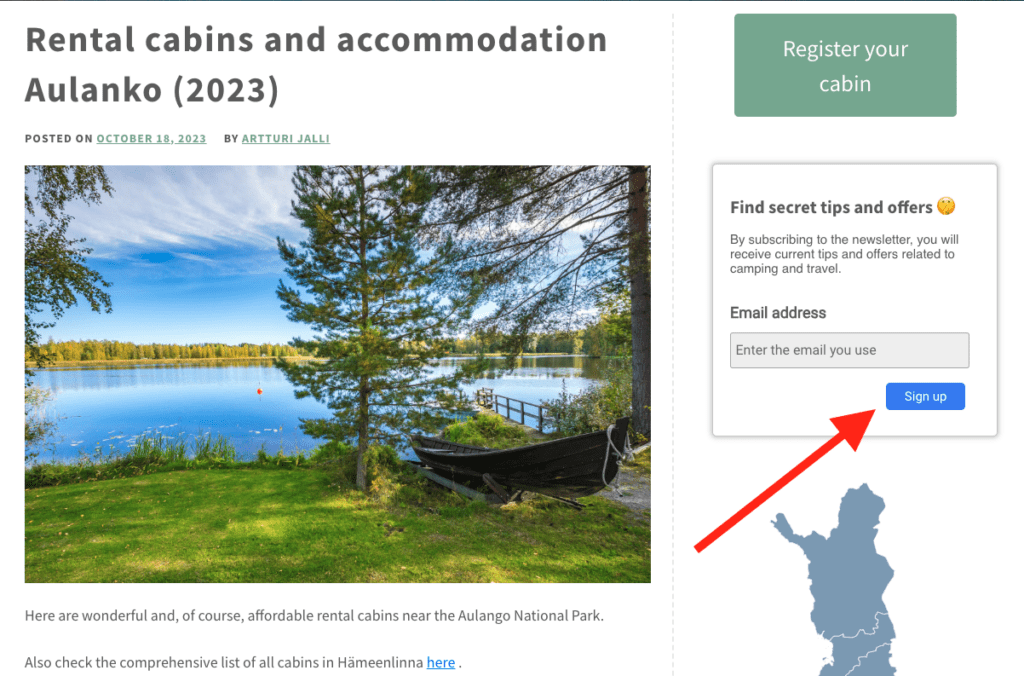
This might sound like an extra bit of work, but it really isn’t.
It’s easy to whip up a short email in just 2-3 minutes and send it to your subscribers.
It doesn’t need to be long or anything. Just one interesting insight or take from your post and that’s it.
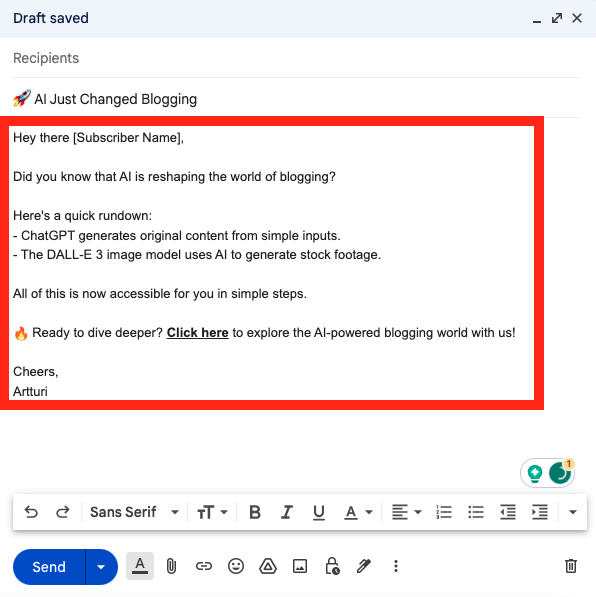
Avoid promotional emails, though.
Those should be short, concise, valuable, and genuine.
Every single mail should give a sensation of FOMO if not reading the associated post.
#3 Feedback
Especially if your blog comments are turned off, you’ll never get any feedback.
The only way to track your performance is by looking at how well your posts are getting traffic.
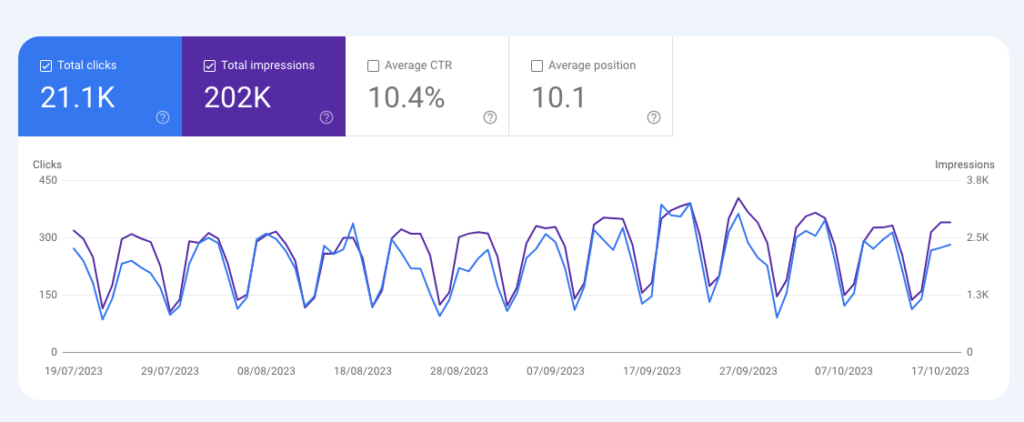
But this is all up to Google’s algorithm.
If you truly want to know what your audience thinks about your posts, then it might be a worthwhile addition to enable comments.
This way, you’ll learn whether people understand your content or what kinds of follow-up questions they might have.
Having readers satisfied is important.
Google measures this and if they determine that your blog posts aren’t good and make people happy, they will lower your rankings.
4. Paid Promotion
#1 Sponsored Posts
If you make income from your blog, you can do a sponsored post collaboration with some websites.

The idea is you write a post that’s highly relevant to your (and the guest site’s) niche.
Then they will share that post with their audience in social feeds as well as their newsletters.
Then you will get visitors and brand awareness from that blog post.
But before you do this, make sure you already have a big and established website.
If your site has no newsletter, affiliate products, or anything you could benefit from, this makes no sense.
A sponsored post can lead to a traffic spike, but that will die down quickly. What you want is to get the guest site’s visitors to discover you and become members of your community.
While this might be a good strategy in some cases, most of the time I’d just focus on writing content for my own site.
5. Technical Optimization
To grow your blog, it’s not enough to have good content and monetization strategies. The technical aspects need to be in place as well.
The good news is that you probably don’t need to worry about this stuff much.
If you run a WordPress or Wix blog (just to name a few), they’ve taken care of most of the stuff on your behalf.
But once you get a ton of traffic to your blog, it’s a good idea to make sure you don’t run any technical issues on your site.
If you don’t have a technical background, this is something you shouldn’t fix. Instead, you can do collaborative work with a freelancer or your hosting company.
Nonetheless, make sure that you (or someone) takes care of the following:
#1 Responsive Design
Your blog should look good on mobile and desktop.

However, this is usually the default in those ready-made themes.
I’ve never done mobile optimization on my WordPress sites because those themes have already done it for me.
But just to be on the safe side, make sure your site is usable on desktop and mobile devices.
If it’s not, change the theme or customize it to be responsive.
#2 Easy Navigation
Create contact and about pages and add them to your main navigation.
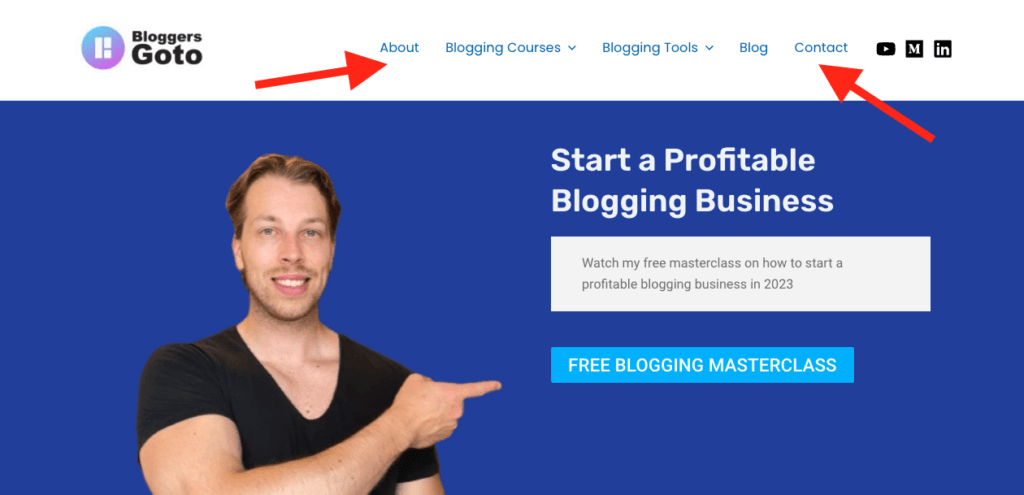
Then create a privacy page and add it to the footer of your site.
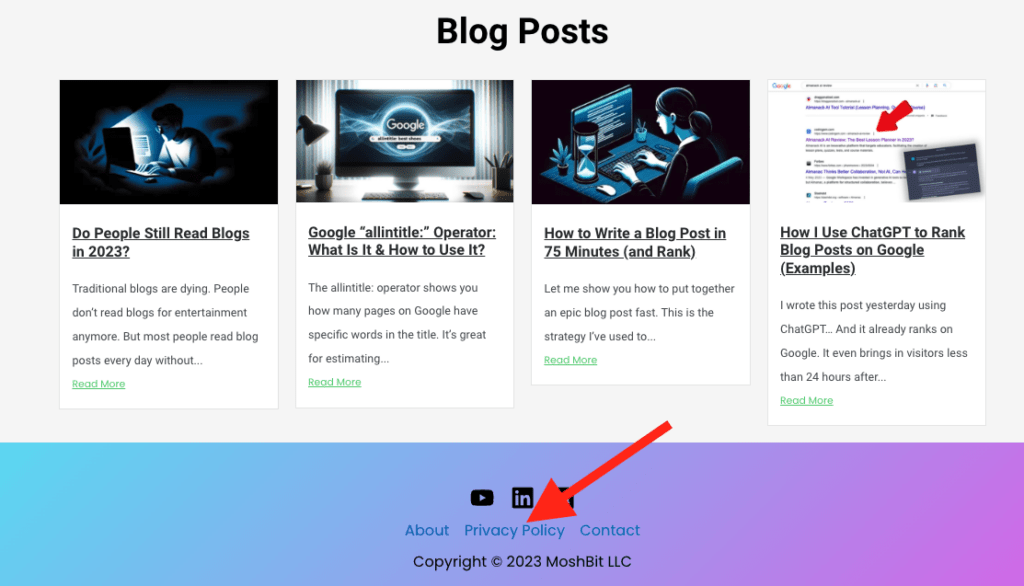
These will all signal to Google that your site is professional. Also, those will make your audience trust you more.
Also, include the most important blog posts or categories in the navigation as well.
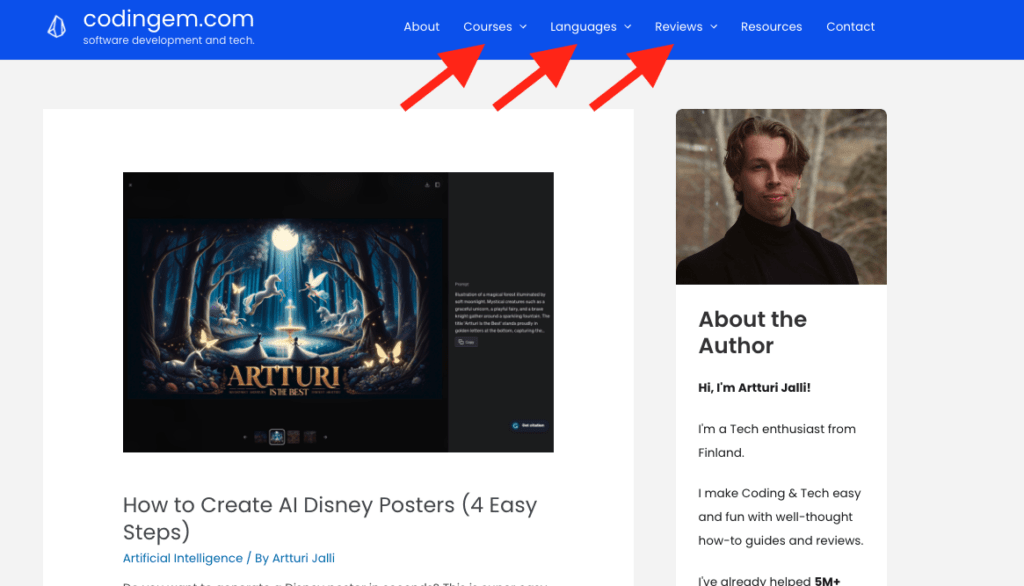
And like I mentioned earlier, make sure to link posts together in a way that makes sense.
Think about your target audience first.
Provide them with maximum value and suggest content wherever they might find it actually insightful.
Don’t force links.
Don’t force every post in your navigation menu not to overwhelm your readers.
Use common sense and think about your visitors. 🙂
#3 SSL Certificate (HTTP –> HTTPS)
Does your site use HTTPS or HTTP?
If it’s HTTP, you need to change that.
Luckily, it’s easy to check if you have HTTP or HTTPS.
Just see if your site has a warning sign in the URL bar or a lock.
If there’s a lock or something like “Secure”, then you’re good.

An SSL certificate encrypts the data between your blog and its visitors.
A site without SSL is unlikely to show up in rankings and bring in visitors.
Most hosting providers offer SSL certificates as part of their package or for an additional small fee. To get started:
- Check with your hosting provider if they offer free SSL.
- If not, consider purchasing one through providers like Let’s Encrypt or Comodo.
- Once acquired, install and activate it through your hosting dashboard or ask for help from their support.
- Always ensure that your site URL starts with “https://” – signaling a secure connection.
#4 CDN
The next growth optimization you can do is to make sure your site loads super fast.
A Content Delivery Network (CDN) is your best bet. These include services like CloudFlare.

A CDN stores copies of your site on servers around the world, delivering content from the nearest one to your visitor.
This means faster load times and happier readers. All of this contributes to higher rankings due to user satisfaction.
Using a CDN can sound technical, but it’s relatively straightforward.
- Choose a CDN provider like Cloudflare, Akamai, or Fastly.
- Sign up and follow their setup process to integrate your blog.
- Make sure to test your site’s loading speed before and after to see the difference.
#5 Optimize Images
Smaller image sizes mean quicker page loads, keeping your audience engaged and reducing bounce rates.
Before uploading, make sure they’re optimized. Tools like TinyPNG or ImageOptim can do wonders.
Also, you can use WordPress plugins like Smush to do it after uploading.
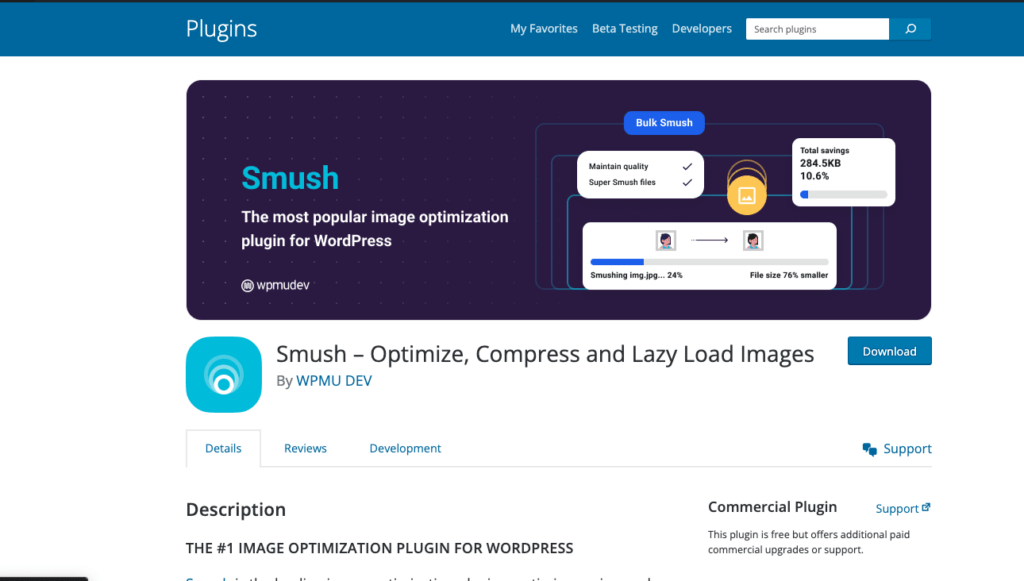
#6 Reduce Plugins
Just as I mentioned about linking posts sensibly, the same goes for plugins.
Keep only the essential ones.
Each plugin adds some load time, and too many can slow down your blog.
Regularly audit and remove any you don’t need.
A smooth-running blog keeps both your readers and search engines happy.
#7 AMP
Think of AMP (Accelerated Mobile Pages) as a booster for mobile devices. In today’s world, many access blogs via smartphones.
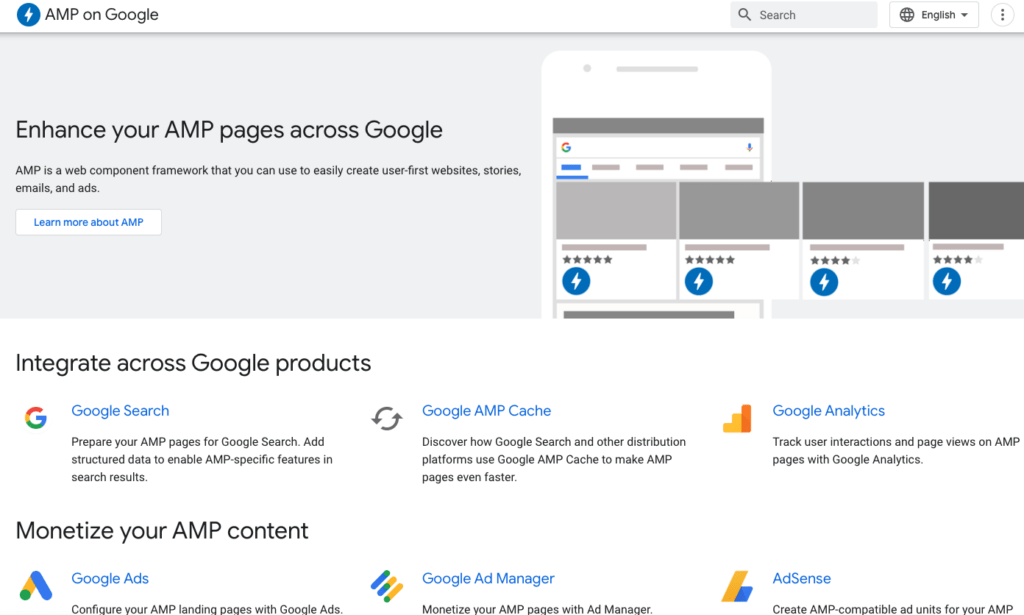
AMP strips down your content to basics for faster mobile loading.
The quicker your blog loads on mobile, the better the user experience, which is always a win-win.
How to take action: Implementing AMP requires a bit of effort but is well worth it.
- If you’re using WordPress, the official AMP plugin can simplify things.
- After installation, test your AMP pages using Google’s AMP Test tool.
- AMP strips down a lot of elements, so make sure your content still looks good and makes sense on AMP.
6. Monetization
Growing is not just about getting visitors or more page views.
As a matter of fact, in many niches, getting visitors might not even yield any income due to demographics and poor monetization opportunities.
To grow your blog to the next level, you should carefully implement and optimize the monetization.
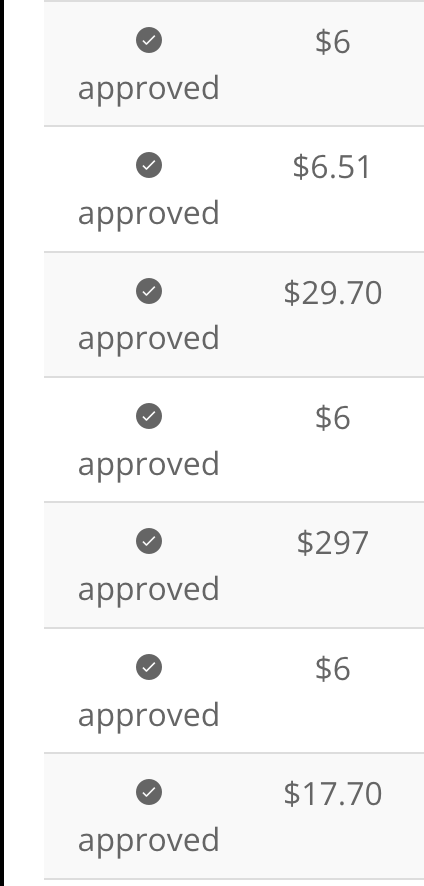
#1 Affiliate Marketing
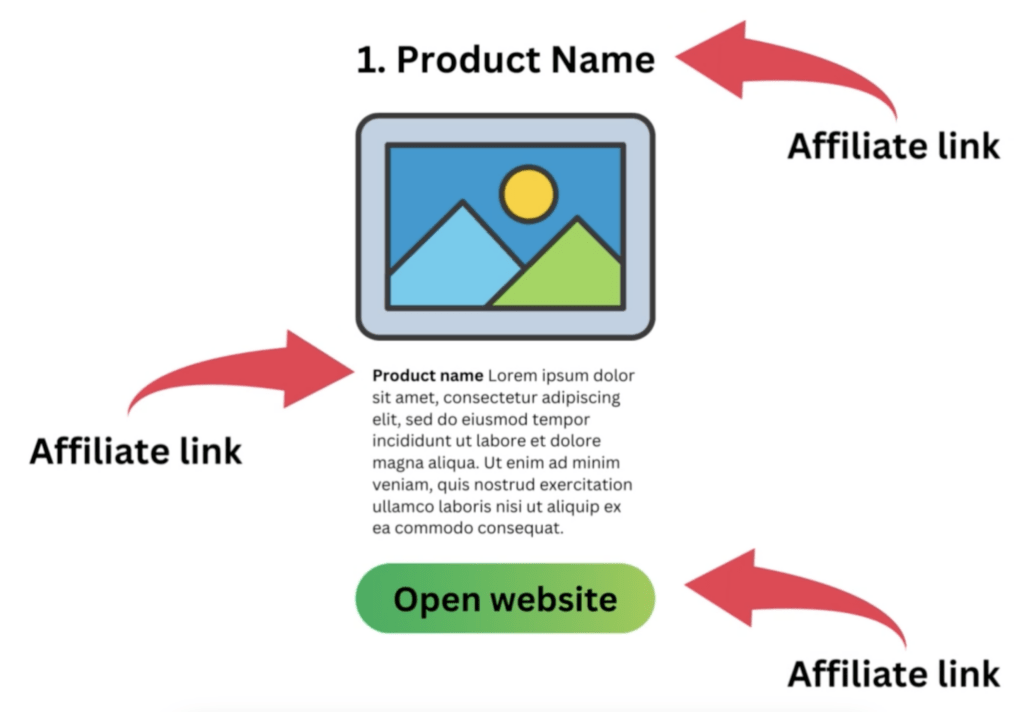
Affiliate marketing is the best way to monetize a blog hands down.
Basically, it means writing carefully crafted affiliate posts that promote products.
If someone makes a purchase through your affiliate link, you will earn a commission.
Here’s an example of an affiliate post.
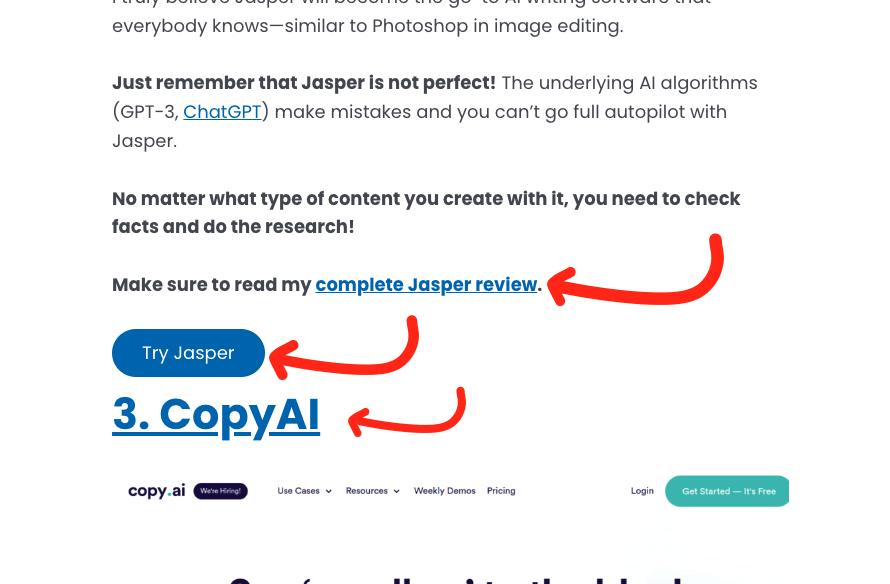
The post reviews some AI writing services and at the end of each service, there’s an affiliate link to the product.
If you want to learn how affiliate marketing works, make sure to watch my video about it.
#2 Ads
Ads are another common way to monetize and grow a blog.
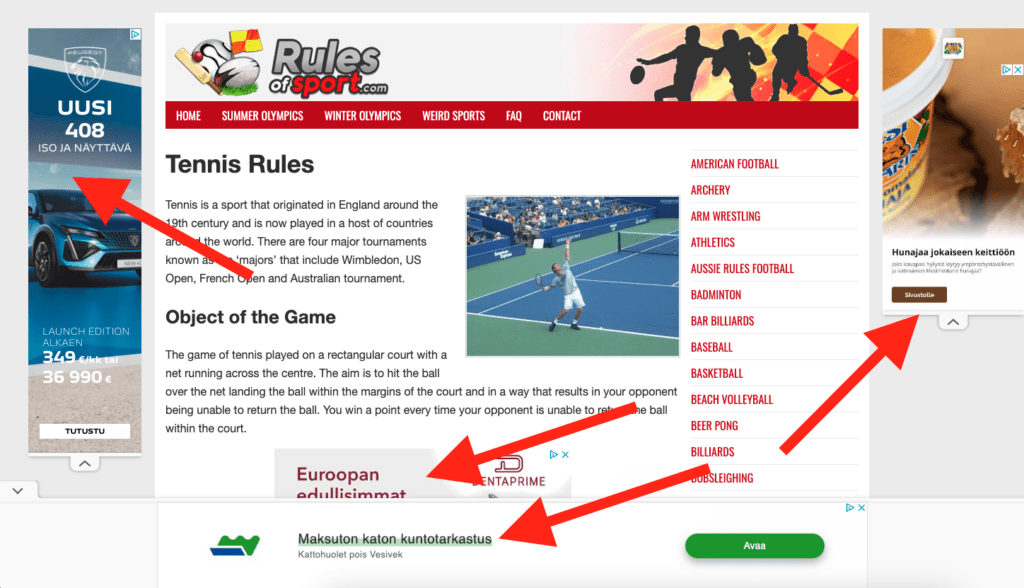
With platforms like Google AdSense or MediaVine, you can easily integrate ads into your blog posts.
The idea is that if someone sees/clicks your ad, you will earn from it.
But ads also have problems. I’ve written a separate post on why I’m not the biggest fan of ads.
Don’t let the ads overshadow your content.
The earnings from these ads will often correlate with your traffic, so as your readership grows, so does your potential income.
But ads are a much weaker monetization strategy than affiliate marketing, for example.
#3 Info Products
Once you have a ton of traffic, you can launch an info product or a course.
This is what grows your blog monetization to a completely different level.
I have an info product too! I sell my blogging knowledge in a program called Blogging Launchpad.

(Of course, it requires hard work, planning, funneling, and whatnot.)
E-books, online courses, guides – the sky’s the limit.
Listen to your readers; what are they curious about?
Tools like Teachable can help you host courses, while Gumroad is fantastic for other digital products.
When you have your product ready, don’t shy away from promoting it. It’s your masterpiece after all.
The beautiful thing about info products?
You set the price, and the earnings often provide a more consistent revenue stream than ads or affiliate links.
#4 Other Strategies
Monetizing your blog doesn’t end with just ads, affiliate marketing, or info products.
While those are the most scalable and passive ways to make money with a blog, there are other options out there too.
Here’s a quick overview of other strategies you might want to consider:
Sponsored Posts: Brands are always on the lookout for influential voices. They’re willing to pay for a spot on blogs that align with their values. If you’ve built a decent following, consider offering sponsored post opportunities. Just remember that any sponsored content should always resonate with your audience.
Sell Merchandise: Got a catchy slogan or unique design ideas? Turn those into t-shirts, mugs, or posters. Websites like Teespring or Printful can help you create and sell custom merchandise without the hassle of inventory or shipping.
Donations: Sometimes, your loyal readers just want to show their appreciation. A simple ‘Buy Me a Coffee’ or a donation button via platforms like Patreon or PayPal can allow your readers to support you directly.
7. Miscellaneous
Absolutely! Let’s delve into these growth strategies and how they can elevate your blog:
#1 Translating Content
English isn’t the only language out there.
By translating your blog into other languages, you’re opening your doors to a global audience.
While you could automate this, it makes sense to use professional to not make the text feel robotic.

Use translation tools or hire professional services to ensure accuracy.
As your content becomes accessible in multiple languages, expect a surge in traffic from non-English speaking regions.
The world is vast, and your message deserves to be heard far and wide.
However, one thing I must say is that you shouldn’t translate before you have a big audience to begin with.
Focus on growing your blog in English English-speaking community and then expand to different languages and regions if necessary.
#2 FAQ Sections
Your readers have questions related to your blog post topics.
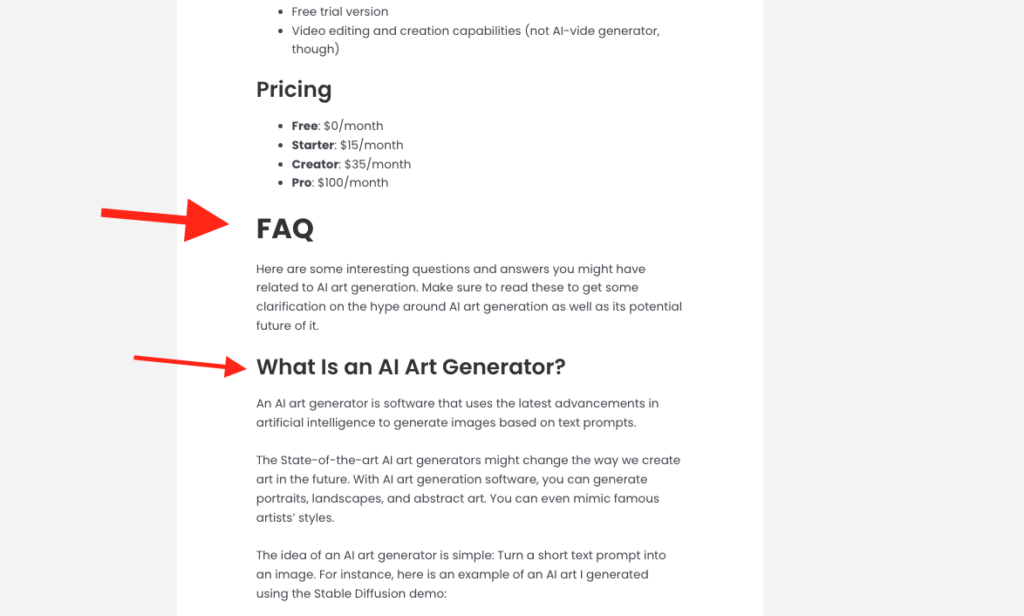
By adding an FAQ section, you’re not only addressing common queries but also showcasing your expertise.
It reduces the bounce rate, as readers won’t need to leave your blog to find answers elsewhere.
Moreover, search engines love the clarity provided by FAQ sections. They’re concise, informative, and highly valuable.
With time, you’ll find this section attracting a significant chunk of organic traffic.
What Strategies Do I Use?
While there are tons of ways to grow your blog, the most important thing is writing.
If you’re just getting started, focus on writing a ton of content every day.
Make every post the best resource on the internet. Treat it like a micro business.
Once you have written a ton of content, you’ll start seeing results.
Then once your site makes significant income and gets a ton of traffic, it can be a worthwhile investment to make sure you try/apply the things on this list.
Wrap Up
To grow a blog, write a ton of high-quality blog posts that solve problems for people in your niche.
That’s the only real strategy to grow a blog. Everything else is just peanuts compared to pushing out content.
All the strategies and tips on this list can give a great boost to your blog. But none of them can displace the power of fresh quality content.
Thanks for reading. Happy writing!
